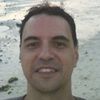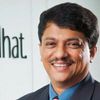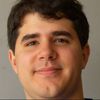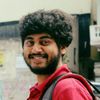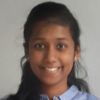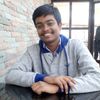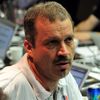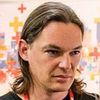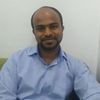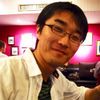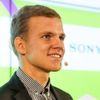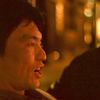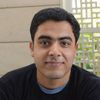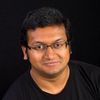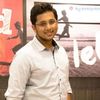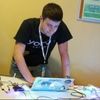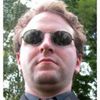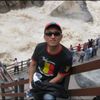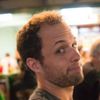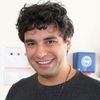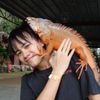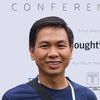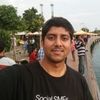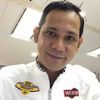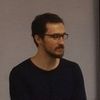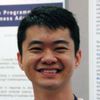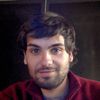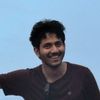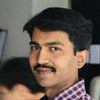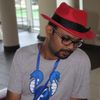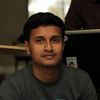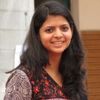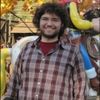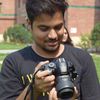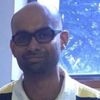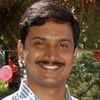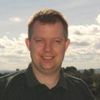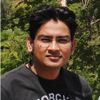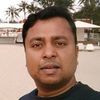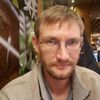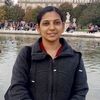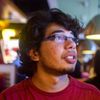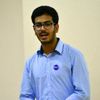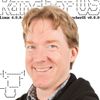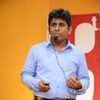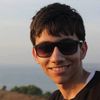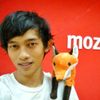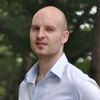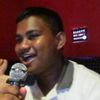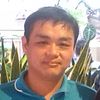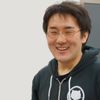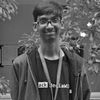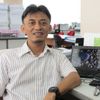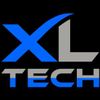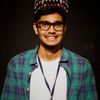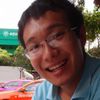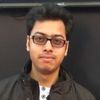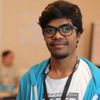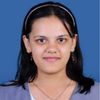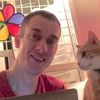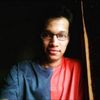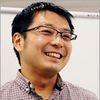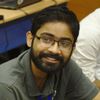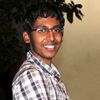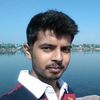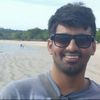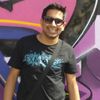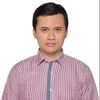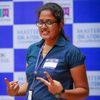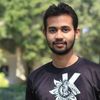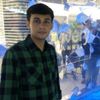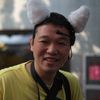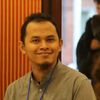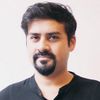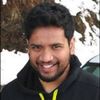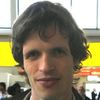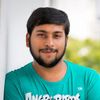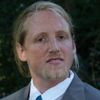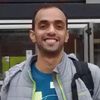Venue
Friday, 17th Mar Saturday, 18th Mar Sunday, 19th Mar
![]()
Nikolay Vlasov (IBM)
- Nikolay Vlasov (IBM)
IBM
IBM Blockchain Engineer, traveler and researcher
Friday, 17th Mar, 09:00 - 10:00
- Blockchain
Annexe Hall (Ground Floor)
![]()
Hong Phuc Dang
- Hong Phuc Dang
Welcome to the FOSSASIA Summit 2017 at the Science Centre Singapore.
![]()
Harish Pillay (Internet Society)
Talk
- Harish Pillay (Internet Society)
- Talk
Can a future of Singularity as articulated by Ray Kurtzwild and also the gloom and doom as noted by Stephen Hawkings indeed be a cataclysmic end to humanity - just as the meteoric accident that killed off dinosaurs? I will paint a picture of hope and one of collaboration. There are plenty of rules we can articulate and follow - including the 'new overlords'.
Internet Society
Annexe Hall (Ground Floor)
Friday, 17th Mar, 09:10 - 09:25
- Open Tech
![]()
Lim Tit Meng (Science Centre Singapore)
- Lim Tit Meng (Science Centre Singapore)
Artificial Intelligence and Science
Science Centre Singapore
Annexe Hall (Ground Floor)
Friday, 17th Mar, 09:30 - 09:40
- Open Tech
![]()
Chan Cheow Hoe (GovTech)
Talk
- Chan Cheow Hoe (GovTech)
- Talk
How Singapore Government’s central information technology systems and infrastructure, drives the development and delivery of innovative public services for citizens and businesses.
GovTech
Chan Cheow Hoe is the Government Chief Information Officer (CIO)/DCE of GovTech. As the Government CIO, Cheow Hoe oversees Singapore Government’s central information technology systems and infrastructure, and drives the development and delivery of innovative public services for citizens and businesses.
Annexe Hall (Ground Floor)
Friday, 17th Mar, 09:40 - 10:05
- Open Tech
![]()
Øyvind Roti (Google)
Talk
- Øyvind Roti (Google)
- Talk
Are you looking for ways to get involved with Open Source in the Cloud? Here's your chance. In this talk, I will briefly talk about Google Cloud Open Source products and related projects, including machine learning, systems, client side libraries and data analytics tools. I'll explain how you can get involved, contribute and share some tips for code reviews.
I lead Google's international team of Cloud Architects who publish reference architectures and advise on best practices for moving to a cloud computing model. My professional focus areas include cloud infrastructure, data analytics and machine learning. Before Google, I worked at Amazon Web Services, Standard Chartered Bank and Accenture.In my spare time I am pursuing a part-time MSc in Computer Science at Georgia Tech, and enjoy making toy projects with Python, Go and C. I consider myself a pragmatist (Emacs with Evil mode) and always look for opportunities to learn from others - so please find me at FOSS and share your knowledge!
Annexe Hall (Ground Floor)
Friday, 17th Mar, 10:05 - 10:35
- Open Tech
![]()
Michael Christen (SUSI AI)
Talk
- Michael Christen (SUSI AI)
- Talk
AI Assistants are able to augment the human intellect, to perform task and offer services, to have capabilities beyond the ordinary power of humans. With open AI Assistants a community can create such tools for their own need. We show that the creation of such tools can be as easy as writing a wiki article. With the proper Cognitive Assistant Technology we will be able to augment human intellect in the same way as it is possible to document the world knowledge with the wikipedia.
SUSI AI
Michael Christen is a Big Data Engineer working for some of the largest corporate players from Germany. He is the founder of loklak and SUSI AI and, the creator of the Peer-to-Peer Search engine YaCy. He is also architect of large search portals like the German Digital Library. As a Master of Science in Computer Science he studied Artificial Intelligence and uses this knowledge for the creation of the Open Source Personal Assistant asksusi.com. As an IT Professional he does consulting for search technology and digital Transformation strategies.
Annexe Hall (Ground Floor)
Friday, 17th Mar, 10:50 - 11:15
- Open Tech
![]()
Liling Tan (Rakuten Asia)
Talk
- Liling Tan (Rakuten Asia)
- Talk
Natural Language Processing (NLP) is the task of the computationally understanding and production of human languages, often using a mix of hand-crafted rules and machine learning techniques. The recent hype in artificial intelligence and deep learning has brought a tsunami of media coverage, governmental interest and public enthusiast. And NLP rode the wave and pushed the computational processing of language to the current frontier. In this talk, we will go through the various NLP open source available and share my experience being a contributor to Natural Language Tool Kit (NLTK) and Moses machine translation suite.
Rakuten Asia
Liling is currently a data scientist as Rakuten Asia. Before that he was working on translation (human and machine) in the Translation Technology Group at the Sprachwissenschaften sowie Übersetzen und Dolmetschen department @ Universität des Saarlandes. Previously, alvas was a linguistics graduate student in Bond lab @ NTU.
Annexe Hall (Ground Floor)
Friday, 17th Mar, 11:20 - 11:40
- Open Tech
![]()
Konrad Willi Döring (Neurofox)
Talk
- Konrad Willi Döring (Neurofox)
- Talk
In the recent years, EEG brain-computer interfaces are becoming popular and more accessible to consumers. Applications range from controlling computers, machines, biofeedback, to quantified self tracking. At first sight, the current generation of commercial devices seem to be decent in their functionality, and various use cases are suggested. However, neurophysiological signal quality, as well as limitations of software and hardware hackability are among the greatest issues and hurdles towards advancement in user experience. This is why we started to work on Brain-Duino, an open-source brainwave amplifier shield for the Arduino and other microcontrollers.
Brain-Duino is a high quality, low noise and affordable EEG / BCI for hackers, makers, researchers, artists and other enthusiasts. This talk will be about how the Brain-Duino project started, where it is now and where it is going. We will briefly explain how EEG brain-computer interfaces work, and also why this topic is relevant, together with the current advances in artificial intelligence and hardware.
During the FOSSASIA you will have the chance to try out the Brain-Duino and visualize your brainwaves.
Neurofox
Annexe Hall (Ground Floor)
Friday, 17th Mar, 11:45 - 12:05
- Open Tech
![]()
Bunnie Huang (Chibitronics PTE LTD)
Talk
- Bunnie Huang (Chibitronics PTE LTD)
- Talk
As society and technology become more deeply intertwined, society is taking interest in -- and influencing -- nuanced technological issues, ranging from net neutrality, to the selection of emojis, to the enforcement of open source licenses. The FOSS community takes for granted the values of open source, but the benefits can be difficult to explain to those who are not empowered to utilize the source. This talk examines some of the cultural and technological barriers that have stymied inclusiveness, using gender imbalance as a case study. Finally, we propose a solution which we call "Love to Code", which attempts to address the issue of inclusiveness in technology.
Chibitronics PTE LTD
bunnie is best known for his work hacking the Microsoft Xbox, as well as for his efforts in designing and manufacturing open source hardware, including the chumby (app-playing alarm clock), chibitronics (teaching electronics through arts and crafts), and Novena (DIY laptop). He received his PhD in EE from MIT in 2002. He currently lives in Singapore where he runs a private product design studio, Kosagi, and he actively mentors several startups and students of the MIT Media Lab.
Annexe Hall (Ground Floor)
Friday, 17th Mar, 13:30 - 13:55
- Open Tech
![]()
Andrey Terekhov (Microsoft)
Talk
- Andrey Terekhov (Microsoft)
- Talk
Andrey will talk about Microsofts Open Source strategy. He will put a particular focus on scaling up open source workloads on Microsoft Azure cloud platform.
Microsoft
Annexe Hall (Ground Floor)
Friday, 17th Mar, 14:00 - 14:20
- Open Tech
![]()
Frank Karlitschek (Nextcloud)
Talk
- Frank Karlitschek (Nextcloud)
- Talk
Nextcloud
Annexe Hall (Ground Floor)
Friday, 17th Mar, 14:25 - 14:50
- Open Tech
![]()
Mario Behling
- Mario Behling
FOSSASIA - Our next steps!
Annexe Hall (Ground Floor)
Friday, 17th Mar, 15:30 - 15:45
- Open Tech
![]()
Roland Turner (FOSSASIA)
Talk
- Roland Turner (FOSSASIA)
- Talk
Low Earth Orbit (LEO) satellites cross the sky fast enough that Doppler-shift often has to be corrected for in order to sustain communication. In this talk I describe my efforts to make use of the Novena's Field-Programmable Radio-Frequency (FPRF) and Gate Array (FPGA) components in combination with various open source Software Defined Radio (SDR) front-ends to receive UHF downlinks and to perform phase-preserving Doppler-shift correction in real-time.
![]()
![]()
![]()
![]()
![]()
Andrew Selle (Google Brain Team), Steffen Braun (KI Group), Michael Christen (SUSI AI), Harish Pillay (Internet Society), Bunnie Huang (Chibitronics PTE LTD)
Panel
- Andrew Selle (Google Brain Team), Steffen Braun (KI Group), Michael Christen (SUSI AI), Harish Pillay (Internet Society), Bunnie Huang (Chibitronics PTE LTD)
- Panel
Google Brain Team
KI Group
SUSI AI
Michael Christen is a Big Data Engineer working for some of the largest corporate players from Germany. He is the founder of loklak and SUSI AI and, the creator of the Peer-to-Peer Search engine YaCy. He is also architect of large search portals like the German Digital Library. As a Master of Science in Computer Science he studied Artificial Intelligence and uses this knowledge for the creation of the Open Source Personal Assistant asksusi.com. As an IT Professional he does consulting for search technology and digital Transformation strategies.
Internet Society
Chibitronics PTE LTD
bunnie is best known for his work hacking the Microsoft Xbox, as well as for his efforts in designing and manufacturing open source hardware, including the chumby (app-playing alarm clock), chibitronics (teaching electronics through arts and crafts), and Novena (DIY laptop). He received his PhD in EE from MIT in 2002. He currently lives in Singapore where he runs a private product design studio, Kosagi, and he actively mentors several startups and students of the MIT Media Lab.
Annexe Hall (Ground Floor)
Friday, 17th Mar, 16:15 - 17:10
- Open Tech
![]()
Mario Behling
- Mario Behling
Annexe Hall (Ground Floor)
Friday, 17th Mar, 17:10 - 17:20
- Open Tech
Digital Design Studio (Ground Floor)
![]()
Arnav Gupta (FOSSASIA)
Workshop
- Arnav Gupta (FOSSASIA)
- Workshop
Learn the basics of deploying an app on the Google Cloud platform by deploying the Open Event Web App project. The Open Event Web App project has two components a) an event website generator and b) the actual generated website output. The web generator application can generate event websites by getting data from event JSON files and binary media files, that are stored in a compressed zip file.
FOSSASIA
Currently I teach Android Application Development at CodingBlocks, a programming bootcamp startup.I have been a Developer and Device Maintainer at CyanogenMod and AOKP, building latest Android images for Sony Xperia devices, adding awesome usability features that make users fall in love. I have also been a contributor to the Dialer and Phone projects under AOSP.I have been a Open Source community partner with Sony Mobile for the last two years.I was part of the team that made many contextually smart UI/UX enhacements for the Micromax Canvas A290, A310, A315 series of phones.I am also an open source enthusiast with contributions to Linux, GNOME, Arduino, Android and other open source projects, and a Google Summer of Code alumnus.Have been a speaker at Mobile Developer Summit 2014, and DroidCon 2014, 2015.
Digital Design Studio (Ground Floor)
Friday, 17th Mar, 13:30 - 15:30
- Tech Kids
![]()
Sreeja Kamishetty
Workshop
- Sreeja Kamishetty
- Workshop
Teaching kids about how to use git, teach them basic git commands and give a live demo. I will be preparing Presentation where I will be explaining git from basics from installation, explaining the use of version control, how to make commits, view the changes in the file made, fork a repository, push the commit to repository, make a pull request. I will showcasing on one of the FOSSASIA project and would share my experience in open source and the amazing journey with FOSSASIA.
Workshops@Exhibition (Ground Floor, Hall A)
![]()
Ananya Maiti (Public Lab)
Workshop
- Ananya Maiti (Public Lab)
- Workshop
Materials required
Print a letter sized pdf from this link
The first one has the build instructions
Print/Trace the pattern on second page onto a black sturdy paper/cardboard. Or you can also use the pattern in first page for markings.
A pair of scissors for cutting out the pattern
A DVD or CD for making a diffraction grating
A smartphone with a camera to capture images of the spectrum obtained using the spectrometer
Assembly Instructions
Follow the instructions given in this pdf which is being printed out
You can get illustrated assembly instructions in this link
Once you have assembled the spectrometer attach it to the rear camera of your phone with some tape
Expose the spectrometer to a fluorescent light bulb or sunlight to obtain a spectrum and capture it in our camera
Once you have got the spectrum you can upload it to spectralworkbench.org to calibrate the spectrum.
Following this we can make a usable spectrometer in few simple steps!
The above method is developed by PublicLab to carry out as an activity to learn about spectrometry for educational purposes.
Public Lab
Contributor at PublicLab, Open Source enthusiast and Ruby Geek
Workshops@Exhibition (Ground Floor, Hall A)
Friday, 17th Mar, 13:30 - 16:00
- Tech Kids
Curie & Hershel (Floor 2)
![]()
Blair Layton (Amazon Web Services)
- Blair Layton (Amazon Web Services)
Amazon Web Services announced a new PostgreSQL-Compatible edition of its Amazon Aurora Database at the re:Invent conference in Las Vegas on November 30, 2016. With Amazon Aurora’s new PostgreSQL support, customers can get several times better performance than the typical PostgreSQL database and take advantage of the scalability, durability, and security capabilities of Amazon Aurora. This session will explain the underlying architecture of the Aurora platform and how it benefits users of PostgreSQL. It will also discuss industry trends on migrations to PostgreSQL and feature a customer's experience of migrating from Microsoft SQL Server to Amazon RDS PostgreSQL.
Amazon Web Services
Blair Layton is a business development manager at Amazon Web Services (AWS). He is responsible for helping customers adopt the AWS platform across Asia Pacific, allowing them to save money, accelerate their time to market, and focus on their core business. He also listens to customer requirements, consolidating the feedback to the product teams to ensure development roadmaps are customer focused. Blair is a database specialist beginning his career as a research assistant at the University of Queensland on a research project for Oracle Corporation. Subsequently, Blair joined Oracle for 13 years, performing various roles across Australia, Europe and Asia. He is based in Singapore where he has been living for over 10 years. Blair earned his Bachelor's degree in information technology from the University of Queensland, Australia.
Curie & Hershel (Floor 2)
Saturday, 18th Mar, 09:00 - 09:55
- Database - PGDay
![]()
Michael Meskes (credativ international GmbH)
Talk
- Michael Meskes (credativ international GmbH)
- Talk
A lot of pros and cons are regularly dicussed when it comes to Open Source usage in business IT. There are a lot of reasons why Open Source is ideal for business critical system, but there are also a lot of uncertainties and doubts by people who are not really involved with Open Source communities. This is in particular a topic for PostgeSQL, which is the most important Open Source solution for businesses. This presentation evaluates those pros and cons and shows how to get the most out of PostgreSQL's Open Source nature for enterprise IT.
credativ international GmbH
Curie & Hershel (Floor 2)
Saturday, 18th Mar, 10:00 - 10:50
- Database - PGDay
![]()
Julyanto Sutandang (Equnix Business Solutions, PT)
- Julyanto Sutandang (Equnix Business Solutions, PT)
In Distributed System, such as Centralized Retail System like Hypermarket, there are 2 approaches for data collection and integration. Use Webservices or use Distributed Databases. By enabling Distributed Databases, and maintained it as if single integrated system, we can achieve simplicity, no context producer and subscriber anymore. this saves a lot of effort, time and resources of course. There are no worry about data synchronization, no need to maintain data Integrity with much effort. In this talk, we will cover about why and how BDR (Bidirectional Replications) implemted in high performance transaction system (which we developed, i.e POS Retail System). Why that matter and how this can be a great lesson for any other implementation.
Equnix Business Solutions, PT
Julyanto Sutandang is the Director and Practitioner of PostgreSQL Solution Provider in Indonesia. He has using PostgreSQL since version 7 and keep it improving his skill since then. Now he works in Equnix Business Solutions, PT. PostgreSQL has getting more accepted in big Enterprises in Indonesia, it is included Big Banks, Telco Companies, and worth to mention Big Retail System such as: Transretail (it was Carrefour Indonesia). He directs Expertise in Open Source especially in Linux and PostgreSQL implementation for Enterprises. Enabling research and experience as the main tools, He with his team facing great challenges from Clients and anticipated well, almost all of our implementation is using against Oracle and perform better more than expected.
Curie & Hershel (Floor 2)
Saturday, 18th Mar, 10:55 - 11:45
- Database - PGDay
![]()
Maksym Boguk (Postgresql-Consulting)
- Maksym Boguk (Postgresql-Consulting)
Unconventional query optimization in PostgreSQL, or how to teach an elephant to dance rock'n'roll.Query performance is usually tuned by simply adding indexes and rewriting the query minimally, while the basic idea of the query stays the same. For many query, this is not the best way to optimize them: you need to rethink and rewrite them completely. To do this, you need to know how optimizer and executor work, and keep that in mind while composing your queries. In this talk, I will present an overview of a few less known and rarely used techniques such as:* using and implementing loose index scan for different scenarios;* using IOS in situation where it isn't applicable directly;* replacing IN (long list of values) with JOIN VALUES ();* moving a limit or offset clause inside joins;* and other tricks with row types and arrays of row types.Using these techniques and some other ideas, we will learn how to optimize a 'friends feed/subscription news' query, which is a typical task in many projects. We will diretcly compare performance of four different approaches: direct approach (simplest query), optimized direct approach (more complicated version of it), pl/pgsql with different algorithms, and implementation of this pl/plsql code in plain sql. I will show how this approach can convert almost any read-only non-dynamic (no EXECUTE statements and no exceptions) pl/pgsql code to a plain sql query.
Postgresql-Consulting
Over 10 years of experience in database management, system troubleshooting, performance tuning and query optimization. Co-founder of PostgreSQL Consulting
Curie & Hershel (Floor 2)
Saturday, 18th Mar, 13:00 - 13:50
- Database - PGDay
![]()
Sushant Mahesh Pawar (Ashnik Technologies India Pvt Ltd)
- Sushant Mahesh Pawar (Ashnik Technologies India Pvt Ltd)
If we look back and see the changes that have happened in last few years, we will realize that how things have changed very rapidly. A decade back, most of the organizations either would have their in-house database servers running on certain hardware and storage configuration. Over the period, when the servers become obsolete, then server/storage migration would itself become separate project and the procurement process for new hardware in any organization is usually time consuming process. In last two years, there has been rise in adoption of Cloud that tries to address this and many other issues. Now you do not have to worry about the underlying hardware and storage, once you know CPU, RAM and storage requirement, you can customize the server and build your own server in cloud. Also, migrating Postgres cluster to cloud is a viable option for safety (no data loss, including if rollback), minimal downtime (switchover and rollback), minimal effort for the team.Considering one of the above reasons for moving to cloud, one of our client’s in FinTech space decided to move their PostgreSQL instance to AWS RDS since RDS offered some of the following benefits like:• Automated failover of primary in case of failure • Automated creation of replicas• Automated updates• A purely declarative setup, via Cloud formationHere I will talk about how technical aspects of moving PostgreSQL server to AWS RDS.• How to configure, tune the parameters in config file while moving onto RDS. • How you can select the storage depending upon growth estimate and IOPS requirement• How you can configure HA setup in RDS.• How you can distribute your reporting workload.• How to monitor Postgres instance and alert configuration
Ashnik Technologies India Pvt Ltd
I am a Database Consultant working with Ashnik having more than 9 years of experience in Database Administration. He is mainly handling the India, South East Asia, region. I works towards providing enterprise level solutions based on Postgres. I have experience in managing the team of DBA’s and well versed with Oracle Single instance, RAC Database implementation, HA Dataguard configuration, Database Administration, Migration and Performance tuning. I am an EnterpriseDB certified PostgreSQL 9.5 professional and has also acquired Oracle DBA professional certification.
Curie & Hershel (Floor 2)
Saturday, 18th Mar, 14:00 - 14:50
- Database - PGDay
![]()
Gary Evans William (Fujitsu Australia)
- Gary Evans William (Fujitsu Australia)
As a major agricultural producer and exporter; with farming associated services contributing up to 12% of GDP, Australia invests heavily in research and development for this sector.Agribotics is one of the new areas where Australian crop producers are looking to increase efficiency when it comes to seeds, watering, fertilizing and harvesting crops.We look at how PostGIS (The PostgreSQL GIS extension)can be used in the processing of Near-Infrared images and NDVI maps in this interesting new area of agriculture.
Fujitsu Australia
A software developer for many years of his career, Gary's interests have moved from application development to data; and how best to extract value from it. His hobbies of Adventure riding and cave diving have created a strong interest in GIS systems and spatial databases.Gary currently works for Fujitsu Australia in their PostgreSQL services team, where he works with Fujitsu's customers to get the best out of PostgreSQL and Fujitsu Enterprise Postgres.
Curie & Hershel (Floor 2)
Saturday, 18th Mar, 15:00 - 15:50
- Database - PGDay
![]()
Sameer Kumar (Ashnik Pte Ltd)
- Sameer Kumar (Ashnik Pte Ltd)
Ashnik Pte Ltd
Curie & Hershel (Floor 2)
Saturday, 18th Mar, 16:00 - 16:30
- Database - PGDay
![]()
Masanori Oyama (NTT OSS Center)
- Masanori Oyama (NTT OSS Center)
In recent years, applicable area of PostgreSQL has quickly extended into the enterprise sector thanks to continuing effort of the community to improve performance and functionality. As a result, there is an emerging demand to use PostgreSQL in more security-critical circumstances.In this presentation, I will talk about the following two topics. * Considerations for securing a database system. * Current status of database audit on PostgreSQLI am working for the open source software center (OSS center) of NTT which is the largest telecommunications company group in Japan. We have encouraged many of our customers to migrate a lot of database systems to PostgreSQL so far and this contributed much to cost reduction.Some projects need to conform to security standards, for example PCI DSS (Payment Card Industry Data Security Standard). It is one of the most prevailing security standard in the world. However it is not easy to build and operate a PostgreSQL-based system conformant to these security standards. I'd like to describe some aspects required for secure database systems in general, such as encryption, key management, identity management and auditing.Then I explain considerable points for building a secure database system using PostgreSQL, and show the remaining challenges for secure database systems using PostgreSQL.Finally, I introduce a forked version of pgaudit that we are maintaining, then explain how to use it. pgaudit is developed by 2ndquadrant and Crunchy Data, especially by David Steel with a great contribution. However, it does not meet our customer's requirements. For example, It cannot output the audit log and server log separately, it cannot audit Superuser fully, etc. So we forked it and added some changes.
NTT OSS Center
I worked on Hadoop around 2015 for my former company, NTT DATA Inc. Now I'm working on PostgreSQL for NTT OSS Center.My current jobs: * PostgreSQL engineering support and consultation. * Extensive quality verification of PostgreSQL releases.
Curie & Hershel (Floor 2)
Saturday, 18th Mar, 16:30 - 17:20
- Database - PGDay
![]()
Sameer Kumar (Ashnik Pte Ltd)
- Sameer Kumar (Ashnik Pte Ltd)
Ashnik Pte Ltd
Curie & Hershel (Floor 2)
Saturday, 18th Mar, 17:30 - 18:15
- Database - PGDay
Dalton Hall (Floor 3)
![]()
Stephanie Taylor (Google Open Source Programs Office)
Talk
- Stephanie Taylor (Google Open Source Programs Office)
- Talk
Google Code-in is a contest for 13-17 year old students interested in learning more about open source software. The program has grown significantly over the last few years with significant participation among students from Asia. This talk will discuss the basics of the Google Code-in program as well as explain why teachers should get their students excited about open source and ideas on how we can continue this upward trend of student participants across Asia.
Google Open Source Programs Office
Stephanie Taylor has been a Program Manager at Google on the Open Source Outreach team for over 6 years. She has given talks to thousands of students about Google Code-in and Google Summer of Code, all with the goal of bringing more students into open source software development. In her free time Stephanie loves to travel, explore, and hike. While finding time to discover the best hot chocolate spots in every city she visits.
Dalton Hall (Floor 3)
Saturday, 18th Mar, 09:00 - 09:25
- Tech Kids
![]()
Anuvrat Rao (Google)
Talk
- Anuvrat Rao (Google)
- Talk
Build using the latest open technology to address critical user needs on the open web. A look into how Accelerated Mobile Pages (AMP), Progressive Web Apps (PWA) and beyond is shaping the future and truly creating a best in class mobile experience
Currently leading Business Development efforts focused on Google Search, Chrome and Developer products.
Dalton Hall (Floor 3)
Saturday, 18th Mar, 09:30 - 10:00
- Web & Mobile
![]()
Andrew Selle (Google Brain Team)
Talk
- Andrew Selle (Google Brain Team)
- Talk
A lot has happened in TensorFlow since its open-source release a year ago. TensorFlow is an open source system for machine intelligence. It's Google's second-generation deep learning system, flexible enough for research yet performant enough for production. In this talk we provide an overview of what TensorFlow is and how it works, a summary of the new developments in the library including high-speed compilation, better ecosystem support, and easier to use high-level libraries. We also discuss how the open source community has shaped its development and success.
Google Brain Team
Dalton Hall (Floor 3)
Saturday, 18th Mar, 10:05 - 10:35
- AI & Machine Learning
![]()
Devan Mitchem (Google)
Talk
- Devan Mitchem (Google)
- Talk
Learn how we are bringing Android to Chrome OS devices to let users do more. This talk will cover the growing diversity of Chrome OS hardware and best practices for Android Apps on Chromebooks.
Dalton Hall (Floor 3)
Saturday, 18th Mar, 10:40 - 11:10
- Open Tech
![]()
Denis Nek (Google's Developer Experts)
- Denis Nek (Google's Developer Experts)
Google's Developer Experts
Dalton Hall (Floor 3)
Saturday, 18th Mar, 11:15 - 11:40
- Android
![]()
Brady Forrest (Highway1)
- Brady Forrest (Highway1)
Lightning and Ignite Talks. Please check out the latest updates about lightning talks on the wiki: https://github.com/fossasia/2017.fossasia.org/wiki/Lightning-Talks
Highway1
Brady is Vice President at Highway1, PCH's incubator program. A prolific speaker and maker on the geek scene, Brady can be found at speaking engagements around the world, inventing new forms of transportation at Burning Man, or creating in the Highway1 San Francisco workshop. Additionally, Brady writes for O’Reilly Radar, tracking changes in technology. Brady is the founder of Ignite, a geek event which has spread to over a hundred cities worldwide.
Dalton Hall (Floor 3)
Saturday, 18th Mar, 12:40 - 14:15
- Open Tech
![]()
Lars Schneider (Autodesk Inc.)
Talk
- Lars Schneider (Autodesk Inc.)
- Talk
Git became really successful in the Open Source world and, more recently, in the corporate world as well. However, Git is not suited for large files by design which is a major obstacle for many adopters. GitLFS is an extension to Git which addresses this problem. In this talk I will explain how GitLFS works and how Autodesk uses it at scale for 4000+ engineers and 1000+ repositories. You will also learn how to use it properly and how to avoid the most common pitfalls. If you have worked with Git before then this talk will prepare you to handle large files without trouble in Git!
Autodesk Inc.
Lars is the technical lead for Git at Autodesk, working out of Berlin, Germany. His current work involves migrating large codebases to Git, establishing Git workflows within teams, and maintaining a GitHub Enterprise instance. He is a Git contributor, the author of the ShowInGitHub Xcode plugin, and an avid kiteboarder.
Dalton Hall (Floor 3)
Saturday, 18th Mar, 14:20 - 14:45
- DevOps
![]()
Christian Couder (GitLab)
Talk
- Christian Couder (GitLab)
- Talk
Since it was created in 2005 by Linus Torvalds, Git has become the new standard in source code and version control. With tools like GitLab and GitHub, it opened up a new era of collaborative development. Through some of its features, let's see how it can have a great impact on software quality and agility.
GitLab
Christian Couder is an independent software developer working on Git for GitLab and Booking.com. He started contributing to Git more than 10 years ago, and he is now among the top 15 Git developers. He has given presentations about Git at many conferences, like LinuxCon North America and Europe, since 2009.
Dalton Hall (Floor 3)
Saturday, 18th Mar, 14:50 - 15:15
- DevOps
![]()
Matthew Treinish (IBM)
Talk
- Matthew Treinish (IBM)
- Talk
The OpenStack Community's CI System operates at a tremendous scale, with on average roughly 12 thousand test jobs launched every day. It's exciting to see testing happen at such a large scale. However there is an issue, it is too difficult for humans to deal with all the data being generated or analyze all the results from the testing. To deal with this the OpenStack community has developed and deployed several tools to help deal with the torrent of data. Using and building off these tools have been invaluable especially as the OpenStack project continues to grow. This talk will explain the basics of OpenStack's CI infra and cover the approach and tooling used by the OpenStack community to interact with the large amount of test result. It will explain the techniques used and the benefits derived from having both open test result data and performing analysis on that data to understand the project.
IBM
Matthew is currently a member of the OpenStack TC (Technical Committee) and was previously the PTL (project technical lead) of the OpenStack community's QA program from OpenStack's Juno development cycle in 2014 through the Mitaka development cycle in 2016. He is a core contributor on several Openstack projects and a core member of the OpenStack stable maintenance team. He has been working on and contributing to Open Source software for most of his career and has been primarily contributing to OpenStack since 2012. Matthew currently works for HPE's Upstream OpenStack team working to make OpenStack better for everyone. Matthew has previously been a speaker at OpenStack summits, LinuxCons Japan and North America, FOSSASIA, PyConAU's OpenStack miniconf, and linux.conf.au's CI and Testing miniconf.
Dalton Hall (Floor 3)
Saturday, 18th Mar, 15:20 - 15:45
- DevOps
![]()
Masayuki Igawa (Hewlett Packard Enterprise)
Talk
- Masayuki Igawa (Hewlett Packard Enterprise)
- Talk
The primary language of most open source projects is English, but open source users and contributors span the globe. Non-native speakers face many communication challenges when participating in the ecosystem. In this talk, as non-native English speakers and contributors to OpenStack projects and its community, we will share our experiences and some best practices for coping as and including non-native speakers in your project.This talk will include:* Common issues for non-native English speakers* Tips for avoiding and resolving these issues* Suggestions for effective communication
Hewlett Packard Enterprise
Masayuki Igawa is a software engineer for over 15 years on a wide range of software projects, and developing open source software related to Linux kernel and virtualization. He's been an active technical contributor to OpenStack since the Grizzly release. He is a core member of some OpenStack QA projects such as Tempest, subunit2sql, openstack-health and stackviz. He currently works for HPE to make Upstream OpenStack better for everyone. He has previously been a speaker at OpenStack Summits, LinuxCons Japan and the other open source related conference events.
Dalton Hall (Floor 3)
Saturday, 18th Mar, 15:50 - 16:25
- DevOps

Atsushi Nakatsugawa (MOONGIFT)
Talk
![]()
- Atsushi Nakatsugawa (MOONGIFT)
- Talk
Japanese enterprise companies have begun introducing HTML5 for their backbone system. However Evolution of HTML5 and JavaScript are really fast and quickly change its trends. They think, want to use long-term trusted architecture. So we have developed oss named hifive. It's HTML5 framework for enterprise companies. I will introduce current status of Japan's enterprise market and what do they need.
![]()
MOONGIFT
I'm front-end and server side developer and hifive evangelist. I run my business in Japan, and I'm Administrator of MOONGIFT that introduces oss everyday for Japanese since Jan 2004. I have introduced 10,000 or more oss. http://www.moongift.jp
Dalton Hall (Floor 3)
Saturday, 18th Mar, 16:30 - 16:55
- DevOps
![]()
Carol Chen (Red Hat)
Talk
- Carol Chen (Red Hat)
- Talk
ManageIQ is an open-source hybrid IT management platform that allows you to discover, optimise and control different cloud, IaaS and container environments with a unified UI. We'll go through a brief history of the project, introduce the community behind it, demo some of its features, and discuss how to contribute and get involved!
Red Hat
Carol Chen is the Community Development Manager for ManageIQ, the open source project that powers Red Hat® CloudForms. She has been actively involved in open source communities while working for Jolla and Nokia previously. In addition, she also has experiences in software development/integration in her 12 years in the mobile industry. On a personal note, Carol plays the Timpani in an orchestra in Tampere, Finland, where she now calls home.
Dalton Hall (Floor 3)
Saturday, 18th Mar, 17:00 - 17:25
- DevOps
Talk
- Talk
Managing your Data Center and Cloud/Infra resources can be a complex and challenging task.ManageIQ, the leading Open Source hybrid cloud management platform presents the operator a consistent view of the data from his cluster, helps planning future scaling, handle unexpected events and proactively identify problems and security issues. One of the most powerful features of ManageIQ is its ability to automate the orchestration of workloads and resource. In this session, I will present recent Implementation of dedicated ManageIQ Ansible modules. Using these modules simplifies bringing your Cloud and Containers into ManageIQ, and leverage its management and orchestration abilities. I will also cover using Ansible from within ManageIQ, utilizing its Automation Engine. After a short demo you’ll know how to: add a Cloud and Containers providers to ManageIQ, manage users, policies and alerts, all through Ansible modules. The demonstration will also include writing and launching ansible playbooks from ManageIQ.
Dalton Hall (Floor 3)
Saturday, 18th Mar, 17:30 - 17:55
- DevOps
Digital Design Studio (Ground Floor)
![]()
Elda Webb (TheCuriousDesign.Network)
Talk
- Elda Webb (TheCuriousDesign.Network)
- Talk
Parents will get to do a quick exercise to get their creative juices flowing.
TheCuriousDesign.Network
Digital Design Studio (Ground Floor)
Saturday, 18th Mar, 09:45 - 10:05
- Tech Kids
![]()
Sreeja Kamishetty
Workshop
- Sreeja Kamishetty
- Workshop
We invite people who speak multiple languages or love to learn languages to join this workshop, get familiar with Weblate a free web-based translation management system. Participants will learn to make their first steps in the internationalization process of an open source project.
![]()
Manan Wason (FOSSASIA)
Workshop
- Manan Wason (FOSSASIA)
- Workshop
In this workshop, students will learn to create a personal portfolio website using open source technologies. The goal of this session is to enable students to work on web projects on GitHub and showcase their understanding of web standards and technologies.
![]()
Jigyasa Grover (loklak)
Workshop
- Jigyasa Grover (loklak)
- Workshop
"With over one billion devices activated, Android is an exciting space to make apps to help you communicate, organize, educate, entertain or anything else you’re passionate about. Clearly there’s a demand for Android app development, and it’s turning the platform with the lovable green mascot into more and more of a strong first choice rather than just a secondary option. So if you’ve been intent on, thinking about, or simply playing with the idea of learning Android… Make Your First Android App is here for you! The session aims at introducing budding developers with the basic concepts and terminology in Android Development. It shall begin from scratch and discuss how to setup the environment and build a very own personal Android App with a Splash Screen for starters."
![]()
Damini Satya Kammakomati (loklak)
Workshop
- Damini Satya Kammakomati (loklak)
- Workshop
ShareLaTeX is an open-source online real-time collaborative LaTeX editor.In this workshop, you will learn how to build CV, business cards, lab reports and much more.
loklak
Digital Design Studio (Ground Floor)
Saturday, 18th Mar, 15:00 - 16:25
- Tech Kids
Einstein (Floor 2)
![]()
Colin Charles (Percona)
Workshop
- Colin Charles (Percona)
- Workshop
Working from home (or a cafe)? Working with geographically distributed teams? This is the new normal.Tools come and go, yet you'll always be thinking about the base - collaboration, interaction, decision making, conflict resolution, and most importantly communication. For people with an open source software development background, much of this might come naturally; mixed mode environments will require some tweaking.Having never worked in an office my entire career (consulting, MySQL, Sun Microsystems, MariaDB Corporation, Percona), here are some lessons that I've managed to learn.
Percona
Colin Charles is the Chief Evangelist at Percona. He was previously on the founding team of MariaDB Server in 2009, and had worked at MySQL since 2005, and been a MySQL user since 2000. Before joining MySQL, he worked actively on the Fedora and OpenOffice.org projects. He's well known within open source communities in APAC, and has spoken at many conferences.
Einstein (Floor 2)
Saturday, 18th Mar, 13:00 - 13:55
- Startup and Business Development
![]()
Virgil Griffith (Legalese)
Talk
- Virgil Griffith (Legalese)
- Talk
We provide updates on our OSS project, Legalese.com, which is developing a programming language to allow programmers (and eventually robots/IoT devices) to draft simple legal agreements using a domain-specific-language.
Legalese
Dr. Virgil Griffith is a postdoctoral researcher at smart.mit.edu. He works on the Legalese OSS project creating a domain-specific programming language for both smart-contracts as dumb-contracts. Virgil is an independent contractor for the Ethereum Foundation. The New York Times has called him the "Internet Man of Mystery". His Erdős–Bacon number is 6.
Einstein (Floor 2)
Saturday, 18th Mar, 14:00 - 14:25
- Startup and Business Development
![]()
Michael Meskes (credativ international GmbH)
Talk
- Michael Meskes (credativ international GmbH)
- Talk
This presentation shows why the software created by OSS communities is so important for business users. It gives some motivations for the immense growth in enterprise space OSS experienced in recent years. With OSS not only fulfilling the technical requirements, but also the operations requirements it quickly became a strategical choice for a lot of companies, be it for internal IT or as the basis of their own products
credativ international GmbH
Einstein (Floor 2)
Saturday, 18th Mar, 14:30 - 14:55
- Startup and Business Development
![]()
![]()
Roland Turner (FOSSASIA), Jason Roy Gary (IBM)
Talk
- Roland Turner (FOSSASIA), Jason Roy Gary (IBM)
- Talk
FOSSASIA
IBM
Einstein (Floor 2)
Saturday, 18th Mar, 15:00 - 15:55
- Startup and Business Development
![]()
Spencer Yang (KeyReply)
Talk
- Spencer Yang (KeyReply)
- Talk
// Micro AI - AI has been one of the hottest technology trends leading up to 2017 - AlphaGo beating Lee Se Do (March) - Massive acquisitions: https://www.cbinsights.com/blog/top-acquirers-ai-startups-ma-timeline/ - FB opened Messenger platform, over 40,000 chat bots developed - Uber, Google, Tesla in self driving cars - Data open sourcing, OpenAI, research datasets- It’s easy to sit back and relax watching all this happening (Image: TV potato couch), but how can entrepreneurs take action (Mine gold action)?- Micro AI product and services from the trenches (Image: call of duty trench fight) - Customer: Identify the right customer (enterprise or consumer or a subset of the offering you give - usual customer development) - KeyReply chat and engagement platform: communication and marketing team for Tech news outlet - TechinAsia - Product: Research, test and learn (product development) - Joke: Buzzword at NIPS - RocketAI - AI Differentiation: Deep research or the novelty, quality and/or quantity of the data they have access to - Healthcare data, financial performance, chat logs with open data sets like Gigaword, Enron email corpus - Share research - Mendeley app (pull in research papers from Arxiv) (Image: App photos) - Started with a demo of the chatbot, Trello board conversational flows, research on the various libraries and tool kits we need to use to deliver the optimal experience - Go to market - Hyping innovation vs expectation management - Promise amazing performance vs determining the right success metric - Charging random pricing vs value based pricing - Team - Know your strengths, build capabilities and optimise for learning - Have everyone be on the same page, read and research - Recruit both in Asia and the US (Singapore as an example - universities, AI research, no. of papers published in EMNLP China vs US vs rest of world)
KeyReply
Spencer Yang is the CEO of KeyReply– an AI chatbot-as-a-service for media, software, e-commerce companies and government agencies. The company's product helps drive AI solutions adoption with government of Singapore, Ninjavan, and other companies. A failed acquisition deal in 2015 forced the team to push the envelope and participated in 3 top accelerators in the USA – AngelPad (NYC), Plug and Play (SV) and Blue Startups (HI). Before starting the company with his co-founders, Spencer headed the Optimizations team at Twitter APAC and graduated with a double degree from Singapore Management University. In his free time, he enjoys games of volleyball, basketball and poker.
Einstein (Floor 2)
Saturday, 18th Mar, 16:00 - 16:25
- Startup and Business Development
![]()
Sudheesh Singanamalla (Microsoft)
Talk
- Sudheesh Singanamalla (Microsoft)
- Talk
The talk focuses on how developers and startups (Web / Machine Learning / Data Science / Services) can use Python/Node/Javascript along with the PaaS, IaaS offerings of Microsoft Azure to build applications and easily deploy them in a few clicks to Microsoft Azure. The talk will showcase rapid web development with flask and angular and setup of the project, development and deployment of the web applications to azure websites. It’ll also showcase running background tasks and time based tasks like triggers using Azure webjobs and webservices. This talk will be beneficial to startups and enterprises which aim to build robust and reliable engineering systems and will be using the Azure Application Insights service to showcase how the tool can help with quick fault detections and out of the box features for user demographics and behaviour. Having such telemetry and notification features in place will help find faults as they happen. The talk will be a showcase on how Microsoft does IT for maintaining and running applications with high availability and low errors.The entire talk and demos would be done using open source tools like Python tools for Visual Studio (PTVS), Node tools for Visual Studio (NTVS) while showcasing capabilities like using multiple virtual environments, built in debuggers a powerful IDE. All the SDKs for Application insights are available open source on the Microsoft github.
Microsoft
I am Sudheesh Singanamalla, currently working at Microsoft Research with a previous work experience at Microsoft India Development Centre and Redhat India Pvt. Ltd..., I've previously been a Google summer of Code student in 2015, 2016 with FOSSASIA working on the loklak project and am a part of it's core development team responsible for the API SDKs, Webclient and IOT enhancements to the server.
Einstein (Floor 2)
Saturday, 18th Mar, 16:30 - 16:55
- Startup and Business Development
Faraday (Floor 3)
![]()
Steven Shiau (Clonezilla)
Talk
- Steven Shiau (Clonezilla)
- Talk
Clonezilla is a free, open source partition and disk imaging/cloning program similar to Acronis True Image®. It saves and restores only used blocks in hard drive. Two types of Clonezilla are available, Clonezilla live and Clonezilla SE (Server Edition). It could be used to Image or clone GNU/Linux, MS windows, Mac OS, FreeBSD, NetBSD, OpenBSD, and Minix. In this talk we will speak about how to deal with backup with Clonezilla.
Clonezilla
Steven Shiau is a researcher at the NCHC (National Center for High-performance Computing), Taiwan. While there he wrote parallel and distributed program to simulate plasma. This program formed the basic idea for the future development of the free software DRBL (Diskless Remote Boot in Linux), a rapid deployment software for distributed PC cluster and education environment. With Kuo-Lien Huang, Ceasar Sun, Jazz Wang and Thomas Tsai, he developed another free software "Clonezilla", a cloning and imaging tool. He is the project leader of the file system imaging tool “Partclone”, and the maintainer of GParted live. The project DRBL won first place in 'Public Sector Applications' category at the Free Software Contest in France in 2007. He is the deputy division leader of software development technology division at NCHC now, and spends most of his time in the development of DRBL, Clonezilla and promoting the use of free software and high-performance computing.
Faraday (Floor 3)
Saturday, 18th Mar, 10:00 - 10:25
- Kernel & Platform
![]()
Lyle Kozloff (Asian Hope)
Talk
- Lyle Kozloff (Asian Hope)
- Talk
At FOSSAsia 2015 I gave a short talk on using Puppet and Ansible to manage the configuration of desktops. In the past two years we've gained a lot more insight into the complexities of managing a fleet of machines that aren't always powered on.
Asian Hope
Lyle graduated from the California Polytechnic State University in San Luis Obispo (otherwise known as Cal Poly) in 2005 with a degree in Computer Engineering. Upon graduation he spent two years serving in Peace Corps, Benin helping local non-profits and other volunteers with technical projects.Since 2009, Lyle has been managing the technical operations of Asian Hope, a Christian non-profit working in Cambodia. As the MIS Director he works with the leadership team in setting strategy, monitoring and evaluation of programs and oversees internal software development and IT operations.Lyle lives with his family in Phnom Penh. He enjoys learning languages, playing with his children and eating delicious things at one of the city's many excellent restaurants.
Faraday (Floor 3)
Saturday, 18th Mar, 10:30 - 10:55
- Kernel & Platform
![]()
VIshnu Patekar (linux-sunxi.org)
Talk
- VIshnu Patekar (linux-sunxi.org)
- Talk
Introduce linux-sunxi community. This is community behind linux kernel and u-boot contributions.I'll talk about current status on contributions and which SOCs are supported on mainline.
linux-sunxi.org
I'm open source enthusiast and currently working for automotive company in Singapore.In my free time I contribute to mainline u-boot and mainline linux kernel.I've contributed to Linux mainline kernel and u-boot for allwinner SOCs.Linux Contributions listed here: http://git.kernel.org/cgit/linux/kernel/git/torvalds/linux.git/log/?qt=author&q=vishnu+patekar U-boot contributions listed here: http://git.denx.de/?p=u-boot.git&a=search&h=HEAD&st=grep&s=vishnupatekar
Faraday (Floor 3)
Saturday, 18th Mar, 11:00 - 11:25
- Kernel & Platform
![]()
Gary Lin (SUSE)
Talk
- Gary Lin (SUSE)
- Talk
In the BIOS time, the firmware was usually obscure and the OS developers had to deal with it by experience. Fortunately, nowadays most of the firmware/hardware vendors share the code from the open source project, edk2, in their own UEFI implementations, so it's much easier to understand the how the firmware works, especially the hardware-independent software stack. What's even better is that edk2 contains a sub-project, OVMF, to provide the firmware for QEMU, the virtual machine, we don't need a bare metal to implement features or debug hardware independent issues anymore. No more expensive flash programmer, just copy the file to update the firmware immediately. This talk will present how to develop and debug OVMF with openSUSE and introduce the new UEFI features in openSUSE Leap 42.2.
SUSE
Gary Lin is a SUSE engineer and long time linux user. He participated openSUSE gnome development and mainly focuses on UEFI related issues now.
Faraday (Floor 3)
Saturday, 18th Mar, 12:40 - 13:05
- Kernel & Platform
![]()
Vaishali Thakkar (Oracle)
Talk
- Vaishali Thakkar (Oracle)
- Talk
Coccinelle is a program matching and transformation tool which provides the language SmPL (Semantic Patch Language) for specifying desired matches and transformations in C code. It has been extensively used for finding bugs and performing source code evolutions in the Linux kernel. Coccinelle is designed around a language for expressing matching and transformation rules in terms of fragments of C code. Coccinelle has been used in the development of almost 4000 patches found in the Linux kernel. More than 40 Coccinelle scripts are distributed with the Linux kernel source code.The talk will highlight the capabilities and limitations of Coccinelle along with introducing various basic features of the SmPL.
Oracle
Vaishali Thakkar is working as a Linux Kernel engineer at Oracle. She works on memory management and security related parts of the kernel. She often uses Coccinelle to find/fix bugs in the kernel and have previously worked as an Outreachy intern on project Coccinelle. Her area of interest includes embedded systems, operating systems, security and computer architecture.
Faraday (Floor 3)
Saturday, 18th Mar, 13:10 - 13:35
- Kernel & Platform
![]()
Philip Paeps (The FreeBSD Foundation)
Talk
- Philip Paeps (The FreeBSD Foundation)
- Talk
This presentation introduces the FreeBSD operating system and the community that produces it.FreeBSD is an advanced computer operating system used to power modern servers, desktops, and embedded platforms. A large community has continually developed it for more than thirty years. Its advanced networking, security, and storage features have made FreeBSD the platform of choice for many of the busiest web sites and most pervasive embedded networking and storage devices.
The FreeBSD Foundation
Philip Paeps ("trouble") is an independent consultant and contractor based in Belgium. He provides research and development on low-level software and operating systems, particularly in an embedded or real-time context. His main interests are bootloaders, device drivers and high-performance networking. He can also be convinced to teach courses and workshops on a variety of networking-related topics.In his so-called free time, Philip is a FreeBSD committer contributing mainly to the kernel and a member of the FreeBSD security team. He was one of the main organisers of FOSDEM, the largest annual open source software conference in Europe, from the early 2000s until 2015. He denies having any involvement with amateur radio or tabletop role playing games.Philip is a director of the FreeBSD Foundation.
Faraday (Floor 3)
Saturday, 18th Mar, 13:40 - 14:05
- Kernel & Platform
![]()
Matt Ranostay (Konsulko Group)
Workshop
- Matt Ranostay (Konsulko Group)
- Workshop
Speaker will go into how to develop an Linux Industrial I/O subsystem driver for an entirely new sensor, and how userspace HALs can process data with reduce system I/O than a pure "userspace driver". Some of the things that will be covered is iio channel consumers + definition, SW + HW triggers, and ring buffer interface. There will be some in-depth overview of the development API to implement a new driver, or add functionality to an existing iio driver. Also will demo of several sensors using the various functionality of iio, including but not limited to hrtimer sw triggers, and buffered data to userspace HALs.
Konsulko Group
Matt has worked in the Embedded Linux field in various roles for 10+ years at various companies including Embedded Alley, Mentor Graphics, Intel's Open Source Technology Center, and currently at Konsulko Group
Faraday (Floor 3)
Saturday, 18th Mar, 14:10 - 15:05
- Kernel & Platform
![]()
Bandan Das (Red Hat)
Talk
- Bandan Das (Red Hat)
- Talk
Have you ever wanted to understand how Qemu and KVM work together ? Wanted to contribute to KVM and/or Qemu but didn't know where to start ? I am here to help! :) This workshop is a deep/fast dive to the KVM and Qemu code base to better understand interaction between them. We will cover the important functions of KVM followed by Qemu. Although, the ecosystem extends way up above Qemu and KVM, we will limit our discussion to the lower layers only.
Red Hat
I am a Software Engineer in the Virtualization group at Red Hat.
Faraday (Floor 3)
Saturday, 18th Mar, 15:10 - 15:35
- Kernel & Platform
![]()
Bandan Das (Red Hat)
Workshop
- Bandan Das (Red Hat)
- Workshop
Nested Virtualization allows a kvm guest to behave as a hypervisor and launch its own guests. Since being introduced, Nested Virtualization has seen feature additions and optimizations, sometimes hardware supported. This talk is focused on x86 nested virtualization; its inner workings and optimizations that make it usable. We will take a look at some current usecases of Nested Virtualization and ponder over the future of this interesting technology with respect to adoption and uses.
Red Hat
I am a Software Engineer in the Virtualization group at Red Hat.
Faraday (Floor 3)
Saturday, 18th Mar, 15:40 - 16:05
- Kernel & Platform
![]()
Carsten Haitzler (Samsung Electronics / Enlightenment)
Workshop
- Carsten Haitzler (Samsung Electronics / Enlightenment)
- Workshop
Finally in 2017 Wayland is shipping in Linux distributions. I'ts already in use on some Embedded devices and that's growing. Why Wayland? Why drop X11? What's better? Come and find out. See Wayland working on tiny and big devices.
Samsung Electronics / Enlightenment
Linux and Open source developers having contributed to various open source projects, founder of Enlightenment, working as Master Engineer for Samsung Electronics Korea working on Tizen Gadgets and the OS. Have used and written software for Linux since 1996 and still do professionally to this day.
Faraday (Floor 3)
Saturday, 18th Mar, 16:10 - 16:35
- Kernel & Platform
![]()
Zhao Qiang (SUSE)
Talk
- Zhao Qiang (SUSE)
- Talk
Plymouth is a bootsplash for Linux supporting animations using Direct Rendering Manager (DRM) and KMS driver. It gets packed into the initrd. Plymouth's theme is a difficult task, and will display every time when system boot with a wonderful animation.
Fermi (Floor 3)
![]()
Marco A. Gutiérrez (RoboComp)
Workshop
- Marco A. Gutiérrez (RoboComp)
- Workshop
LearnBot is a fully open source robot that runs on an ODROID ARM hardware. The outside is made of fully 3D printed pieces, which makes it very easy for anyone to make their own version at home. It runs GNU/Linux along with the RoboComp Framework and can be easily programmed through python components. It is meant for educational purposes, although it can be used for any other research projects. In terms of sensors it comes with a camera and ultrasounds, while regarding actuators it has motors to move around. However, due to its simple design, it is easy to add new peripherals as required.
RoboComp
Marco is an advocate open source developer, specially in the field of robotics. He is currently in the final stage of his PhD in computer vision for robotics. He has participated as developer in several open source projects, mostly related to robots, such as the PointCloud Library, RoboComp or OpenDetection. This year will be his fourth year as a Google Summer of Code organization administrator for the robocomp project and the second year with OpenDetection.
He is also currently experimenting with OpenWRT and WIFI devices.
Fermi (Floor 3)
Saturday, 18th Mar, 12:35 - 13:00
- Hardware & Making
![]()
Alessandro Volpato
Talk
- Alessandro Volpato
- Talk
Scientific research is producing amazing results at high rate. However it is incredibly difficult for non-experts to understand such studies and their implications. The open source technology movement simplifies those concepts and allows the understanding of these works. This enables citizen to answer scientific questions affecting directly their lives. The "Rock your Rainbow" project aims to disassemble already existing open source spectrometers, and re-design the modules to be flexible and compatible with custom built devices. With this tool it is possible to approach spectrometry: simple examples are the analysis of light bulbs emission spectra and its influence on our psycophysical health, or the classification of plant pigments.
Alessandro joins open-source projects combining biology skills with hardware-software programming. He integrates bio-protocols on flexibility-drawn microfluidics devices.
Fermi (Floor 3)
Saturday, 18th Mar, 13:05 - 13:30
- Hardware & Making
![]()
Stephan Wissel (IBM)
Talk
- Stephan Wissel (IBM)
- Talk
Getting a LED to blink is easy, making a strip of 60 LED produce a pattern that is not an annoying is hard. Lets have a look at the trials and tribulations and the patterns I came across when designing lights for my use at home. There will be blinking in all colors
IBM
Stephan is an IBM Code Mage who started coding with COBOL. He's a frequent speaker on IT related topics and interested in mobile and IoT. He's blogging for more than a decade at wissel.net
Fermi (Floor 3)
Saturday, 18th Mar, 13:35 - 14:00
- Hardware & Making
![]()
Nguyen Hong Quan (agriconnect.vn)
Talk
- Nguyen Hong Quan (agriconnect.vn)
- Talk
- What our software does and how it looks like.
- The FOSS software stack we uses to build the planting room control system: Python, Django, PostgreSQL etc
- Some challenge we faced (network issue, database issue) in our special condition, and how we overcame it.
agriconnect.vn
Fermi (Floor 3)
Saturday, 18th Mar, 14:05 - 14:30
- Hardware & Making
![]()
Matthew Treinish (IBM)
Talk
- Matthew Treinish (IBM)
- Talk
After I came home from a recent trip that happened to occur during the middle of a heat wave. I arrived to find my apartment quite too hot, it was at least 45C inside. Needless to say it wasn’t the most comfortable way to come home after 15 days out of town, I decided it was time for me to do something aboutit to address this so I didn't come home to that unpleasant surprise again.In most houses this problem is avoided by having a thermostat which controls the air conditioning. However, the problem for me was that my apartment didn'thave a thermostat for the air conditioning. So I decided to build one using open source software. This talk will cover a how I went about solving my problem using existing software and protocols like home-assistant, MQTT, and also some new software that was created for this. It'll also go over how using software and home automation I was able to not only solve my heating issue but also make cooling my apartment smarter.
IBM
Matthew is currently a member of the OpenStack TC (Technical Committee) and was previously the PTL (project technical lead) of the OpenStack community's QA program from OpenStack's Juno development cycle in 2014 through the Mitaka development cycle in 2016. He is a core contributor on several Openstack projects and a core member of the OpenStack stable maintenance team. He has been working on and contributing to Open Source software for most of his career and has been primarily contributing to OpenStack since 2012. Matthew currently works for HPE's Upstream OpenStack team working to make OpenStack better for everyone. Matthew has previously been a speaker at OpenStack summits, LinuxCons Japan and North America, FOSSASIA, PyConAU's OpenStack miniconf, and linux.conf.au's CI and Testing miniconf.
Fermi (Floor 3)
Saturday, 18th Mar, 14:35 - 15:00
- Hardware & Making
![]()
Quang Nguyen (DEK Technologies Vietnam)
Talk
- Quang Nguyen (DEK Technologies Vietnam)
- Talk
Continuous Integration (CI) is crucial in modern software development. Jenkins is an open source software for this purpose. A lot of teams involve Mr. Jenkins and hope for a better quality software. But do they know that they are killing Mr. Jenkins? My talk will answer this question and introduce 3 levels of good practices to maintain a healthy, strong and long living Mr. Jenkins. One of them is a simple and cool hardware designed by ourselves. #jenkins #esp8266 #hey!2.0 #3dprinter #lasercutmachine
DEK Technologies Vietnam
Quang has worked with IT for more than 10 years with different positions, he still loves writing code. 2y ago, he felt in love with meditation and IoT; of course he brought them to his programming.Currently, he works as an Agile Coach for DEK Technologies, a Software and Hardware Development Company. He helps to build up Agile and Lean culture in the company. People call him an Agile Coach, he calls him an Impediment :)Additionally, he also contributes for Agile Vietnam community by organizing as well as giving speaks in many conferences and events.
Fermi (Floor 3)
Saturday, 18th Mar, 15:05 - 15:30
- Hardware & Making
![]()
Prashant Ravi (Nanyang Technological University)
Talk
- Prashant Ravi (Nanyang Technological University)
- Talk
The Moore's law has almost come to an end and not much performance up gradation can be achieved just by upgrading hardware generations. The methods of frequency scaling and core multiplication have reached their maximum limits of exploitation and cannot be explored further. This gives rise to the need for heterogeneous computing.Heterogeneous computing refers to systems that use more than one kind of processor or cores. These systems gain performance or energy efficiency not just by adding the same type of processors, but by adding dissimilar co-processors, usually incorporating specialized processing capabilities to handle particular tasks.There are a number of heterogeneous devices that are readily available off the shelf, some of them as commercially available system on chips (SoCs) and can be easily accessible to the average embedded software programmer. These heterogeneous devices incorporate hardware accelerators, such as GPUs and FPGAs. The advantages of having multiple types of hardware accelerators within a system on chip are many, such as high-performance gains and specificity of tasks performed. One of the major issues is the exotic programming model that each hardware accelerator brings along with it. FPGAs bring along the requirement to write accelerators using hardware description language (HDL) at a very low level of abstraction (register transfer level) which has a really steep learning curve, extremely long compilation/place and route timings and are relatively difficult to debug. GPUs have their own programming languages and until a few years ago GPUs were used predominantly for graphics processing as the name suggests. However off late, with computing problems of large sizes and datasets, a lot of computations are being off-loaded to the GPU due to its benefit in parallel execution. Even with a great number of devices available, the difference in programming models makes it difficult to truly use all these devices in unison. Even with these multitudes of methods available for hardware acceleration, it is still not possible for software developers to adopt and use these devices as part of their daily routine for hardware acceleration. In order to achieve the full potential of hardware acceleration, multiple heterogeneous devices within the same SoC must be programmable using a single programming model and also the programming model must be portable across devices without loss of functionality. The aim of this talk is to throw light on the OpenCL(Open Computing Language API) and its potential for being the one single language that can be used to program multiple devices.
Nanyang Technological University
Masters Student, Software Engineer with specialization in embedded systems. Have worked with multiple hardware systems with applications in the automotive industry and IOT. With a strong academic background have written a thesis based on OpenCL and its performance characteristics on various embedded systems. An ardent maker with a combination of hardware as well as software skills which help me bring about the fine tuned performance from embedded systems.
Fermi (Floor 3)
Saturday, 18th Mar, 15:35 - 16:00
- Hardware & Making
![]()
Darin Lobo
Talk
- Darin Lobo
- Talk
My name is Darin Kris Lobo and I am a 16 year old student. I enjoy building gadgets and doing projects as a hobby. I am interested in Quantum mechanics, Genetics and Neuroscience and recently I am currently learning about electronics and programming. I am an advocate for citizen science and I am trying to encourage the public to gain interest in science.
Fermi (Floor 3)
Saturday, 18th Mar, 16:05 - 16:30
- Health Tech
![]()
Guruswamy Revana (BVRIT Hyderabad College of Engineering for Women)
Talk
- Guruswamy Revana (BVRIT Hyderabad College of Engineering for Women)
- Talk
The project deals with developing various mobile applications (Apps) using free and open-source web application for hearing impaired children. The work has been done in association with a Non-Governmental Organization (NGO) called SAHI, Society to Aid the Hearing Impaired which is part of Apollo Hospitals, Hyderabad. SAHI supports the hearing impaired kids for Cochlear implant surgery so that the kids audibility increases. After the surgery audio therapy is given to kids for better understanding of the surrounding world. By using free and open source web applications, MIT App Inventor, various mobile Apps have been developed for the better learning of the kids. The learning of the impaired kids have been cleared explained by the special teachers to the developers. This made to develop Apps more clearly, concisely and perfectly. Different Apps were done keeping in the view of international standard of teaching to special kids who are hearing impaired. The Apps developed covered variety of topics such as Early Vocabulary,Vehicle and Voice Sounds, Syllable Length Word (in English and local languages - Hindi and Telugu), Discriminate Consonant, Same Length Words (in English and local languages - Hindi and Telugu), Leaning by Manner, Learning of Colors, Learning various Poems (in English and local languages - Hindi and Telugu) and explaining short Stories(in English and local languages - Hindi and Telugu). The Apps have been done in both English and native languages too keeping in view of the therapy requested by the kid's parents. Tests are also included in the Apps to know the level of learning. During initial stages, suggestions were given by audiologists, special teachers and counselors. After continuous and rigorous reviews and feedbacks, the apps developed had become satisfactory to all the special trainers and was ready to use. They were given to the challenged kids for testing as a part of their learning. The results found by the teachers were astounding. Children are showing more interest to learn on mobile rather than book. The duration of attention towards learning of the kid has drastically improved. Teachers training the special kids are very happy with this m-learning (Mobile learning). Parents too found it to be amazing as their kids show more interest towards learning through mobile. Also, now they are very much comfortable to train the kids at their homes by using these Apps. The parents are very excited to get all these learning Apps shared to their mobiles. It is a great feeling of satisfaction to see kids interested to learn and the parents with bright smile on their face. This all happened by developing learning Apps of open-source software. Over all it's an awesome experience !!
BVRIT Hyderabad College of Engineering for Women
This is Guruswamy Revana working as Associate Professor at BVRIT Hyderabad College of Engineering for women. I totally have 14 years of teaching experience in the field of Electrical and Electronics Engineering. I completed my Master of Technology from Jawaharlal Nehru Technological University, Anantapur and Bachelor of Engineering from Andhra University. My areas of interest are Assistive Technologies, Open Source Software, Renewable energy sources and Robotics.
Fermi (Floor 3)
Saturday, 18th Mar, 16:35 - 17:00
- Health Tech
![]()
Brady Forrest (Highway1)
Talk
- Brady Forrest (Highway1)
- Talk
Making something is easy; making something that can be made is hard – very hard. As the cofounder of Highway1, a hardware accelerator, I've seen many dead bodies in the early stage hardware space. Hardware takes longer, costs a lot and requires more people. It can be perilous for a company, but the rewards can be great. This talk outlines some of the funding and product development lessons that I've learned with my startups.
Highway1
Brady is Vice President at Highway1, PCH's incubator program. A prolific speaker and maker on the geek scene, Brady can be found at speaking engagements around the world, inventing new forms of transportation at Burning Man, or creating in the Highway1 San Francisco workshop. Additionally, Brady writes for O’Reilly Radar, tracking changes in technology. Brady is the founder of Ignite, a geek event which has spread to over a hundred cities worldwide.
Fermi (Floor 3)
Saturday, 18th Mar, 17:05 - 17:30
- Hardware & Making
![]()
Michael Rebultan (Equinix Asia Pacific Pte Ltd)
- Michael Rebultan (Equinix Asia Pacific Pte Ltd)
In the present world of IoT and the rise of smart city; people are unaware of the persistent and unpredictable threat that may encounter with their daily lives. This short talk will enlighten them to be cautious and equipped with knowledge on how to evade Social Engineering attack, online and offline.
Equinix Asia Pacific Pte Ltd
IT professional with 14 years of experienced and drown with passion on Malware Analysis, Forensics, and Penetration testing who loves to share knowledge to the world.
Fermi (Floor 3)
Saturday, 18th Mar, 17:35 - 18:00
- Hardware & Making
Lewis (Floor 3)
![]()
Ricky Setyawan (Oracle)
Workshop
- Ricky Setyawan (Oracle)
- Workshop
As a tradition of MySQL Community meetup, we always have a platform where our community will be able to discuss everything about MySQL with our developers.
Oracle
Ricky Setyawan has been in the IT industry for 18 years with the good last 16 years working as RDBMS specialist. He is currently MySQL Principal Sales Consultant for Singapore, Malaysia, Indonesia, Brunei and Pakistan. Prior to joining Oracle, he was a Principal DBA doing database design and management on Oracle and DB2 on RedHat Linux on continuous availability server. He has been working on a number of RDBMS throughout his career such as Oracle, DB2, SQL Server, and MySQL.
Lewis (Floor 3)
Saturday, 18th Mar, 13:00 - 14:25
- Database - MySQL Day
Mendel (Ground Floor)
![]()
Alexander Bezzubov (Apache Software Foundation)
Talk
- Alexander Bezzubov (Apache Software Foundation)
- Talk
What if all open source software can be treated as a dataset? In this session we will discuss what can be derived form such a dataset using modern machine learning tools such as DeepLearning, clustering, etc.
Apache Software Foundation
Alexander is a software engineer and PMC of Apache Zeppelin
Mendel (Ground Floor)
Saturday, 18th Mar, 13:00 - 13:25
- AI & Machine Learning
![]()
Ben Sadeghi (Microsoft)
Talk
- Ben Sadeghi (Microsoft)
- Talk
The Microsoft Cognitive Toolkit trains and evaluates deep learning algorithms, scaling efficiently in a range of environments—from a CPU, to GPUs, to multiple machines—while maintaining accuracy.In this talk, we'll discuss the basics of the toolkit, common use-cases, and go through a quick demo.Landing Page: microsoft.com/en-us/research/product/cognitive-toolkitSource Code: github.com/microsoft/cntk
Microsoft
Ben Sadeghi is the Big Data & Advanced Analytics Specialist at Microsoft (SE Asia & Korea), providing consulting and implementation services on the cloud-based Azure Cortana Analytics Platform.Prior to Microsoft, Ben worked as a data scientist at MapR Technologies, applying data-driven, machine learning solutions on Hadoop. He has developed internal and external data products at Wego.com, a travel meta-search site, and worked in the Internet of Things domain at Jawbone, where he implemented predictive applications for the UP Band self-quantification platform. Before moving to the private sector, Ben contributed to several NASA and JAXA space missions.Ben is an active member of the open-source Julia language community. He holds an M.Sc. in computational physics, with an astrophysics emphasis.
Mendel (Ground Floor)
Saturday, 18th Mar, 13:30 - 13:55
- AI & Machine Learning
![]()
Michael Christen (SUSI AI)
Workshop
- Michael Christen (SUSI AI)
- Workshop
AI Assistant Development for everyone! We do a colaborative creation of Susi Skills which is as easy as writing a wikipedia article. You don’t need to be a programmer to create an artificial intelligence which provides knowledge and IoT steering abilities.
SUSI AI
Michael Christen is a Big Data Engineer working for some of the largest corporate players from Germany. He is the founder of loklak and SUSI AI and, the creator of the Peer-to-Peer Search engine YaCy. He is also architect of large search portals like the German Digital Library. As a Master of Science in Computer Science he studied Artificial Intelligence and uses this knowledge for the creation of the Open Source Personal Assistant asksusi.com. As an IT Professional he does consulting for search technology and digital Transformation strategies.
Mendel (Ground Floor)
Saturday, 18th Mar, 14:00 - 14:55
- AI & Machine Learning
![]()
Dr. Graham Williams (Microsoft)
Talk
- Dr. Graham Williams (Microsoft)
- Talk
The most popular ecosystem for Machine Learning and Data Science is the Free and Open Source Statistical Language R. Over the past 20 years R has grown from a specialist tool for a handful of statisticians to an estimated 4 million users. This talk will introduce the R ecosystem for Machine Leaning. We will learn how Decision Trees are built through the accessible Rattle graphical user interface and showcase some of today’s developments in Big Data deploying Artificial Intelligence and Machine Learning technologies based on open source software.
Microsoft
Dr. Graham Williams is Microsoft's Director of Data Science for the Asia and Pacific region. He recently joined Microsoft bringing with him over 30 years of research and deployment in Artificial Intelligence, Machine Learning, Data Mining, Analytics and Data Science. Graham has authored a number of books introducing Data Mining and Machine Learning using the R Statistical Open Source Software. Until recently he was principal data scientist with the Australian Taxation Office and was the lead data scientist with the Australian Government's Center of Excellence in Analytics. Through these roles he assisted government departments in building their Data Science capabilities and worked on projects that focused on delivering cost effective data science solutions using open source platforms.
Mendel (Ground Floor)
Saturday, 18th Mar, 15:00 - 15:25
- AI & Machine Learning
![]()
Melvin Zhang (Magarena)
Talk
- Melvin Zhang (Magarena)
- Talk
Magarena
Melvin is an avid programmer who enjoys designing and implementing novelalgorithms. As the maintainer of Magarena, an open source card game project, Melvin focuses on improving the AI and releasing an update every month. Melvin received his B. Comp (Hons) and Ph.D. degrees from National University of Singapore, School of Computing.
Mendel (Ground Floor)
Saturday, 18th Mar, 15:30 - 15:55
- AI & Machine Learning
![]()
Luis Morgado da Costa (NTU)
Talk
- Luis Morgado da Costa (NTU)
- Talk
We present a novel approach to intelligent computer assisted language learning (iCALL) systems, using deep syntactic parsers and semantic based machine translation in the diagnosing and providing explicit feedback on users’ language errors, using Mandarin Chinese (L2) as a case study. In this presentation we describe the proposed approach and current progress of a recently funded two year project. During this project, we are developing a proof of concept system showing how semantic based machine translation can, in conjunction with robust computational grammars, be used to interact with students, better understand their language errors, and help students correct their grammar through a series of useful feedback messages and guided language drills.Ultimately, we aim to prove the viability of a new integrated rule-based MT approach to disambiguate students’ intended meaning in computer-assisted language teaching. This is a necessary step to provide accurate coaching on how to correct ungrammatical input, and it will allow us to overcome the current bottleneck in Computer Assisted Language Learning (CALL) – an exponential burst of ambiguity caused by ambiguous lexical items.
NTU
I am a researcher in computational linguistics. I have been working under the supervision of Francis Bond at NTU for the past 3 years. Among others, my research focuses mainly on deep semantic and syntactic parsing, lexical semantics and computer assisted language learning.
Mendel (Ground Floor)
Saturday, 18th Mar, 16:00 - 16:25
- AI & Machine Learning
![]()
Gaeun Kim (Canary Center at Stanford for Cancer Early Detection / Stanford University Online High School)
Talk
- Gaeun Kim (Canary Center at Stanford for Cancer Early Detection / Stanford University Online High School)
- Talk
The Translational Molecular Imaging Lab at the Stanford Canary Center for Cancer Early Detection applies machine learning algorithms to extensive collections of ultrasound data to improve pancreatic and breast cancer diagnostics. I will present an overview of the MeVisLab software that we use to analyze and segment 3D ultrasound images, and then dive into the machine learning techniques that are used to improve spatial and temporal resolution for the detection of molecularly targeted ultrasound contrast agents. These techniques, applied to big data and combined with in vitro blood testing, have significantly improved the accuracy of cancer diagnostics, and present the future of early cancer detection. As a concluding remark, I will discuss the potential of open-sourcing medical imaging data and the benefits it will bring to the medical field as a whole, telling my story of how I originally got involved with an open source project called CancerBase.org and how that developed into an opportunity to work at a professional lab.
Canary Center at Stanford for Cancer Early Detection / Stanford University Online High School
I am a research fellow at the Translational Molecular Imaging Lab within Stanford’s Canary Center for Cancer Early Detection, and I am working on developing machine learning algorithms to detect pancreatic and breast cancer molecular imaging markers. I am also an avid open source contributor to CancerBase.org. When I’m not working at the lab, I am a 15 year old high school junior at Stanford University Online High School.
Mendel (Ground Floor)
Saturday, 18th Mar, 16:30 - 16:50
- AI & Machine Learning
![]()
Martin Andrews (Red Cat Labs)
Workshop
- Martin Andrews (Red Cat Labs)
- Workshop
Since the last FOSSASIA, the Deep Learning Workshop repo (on mdda's GitHub) has been extended substantially. Depending on the time allotted, we'll be able to tackle 1 or 2 'cutting edge' topics in Deep Learning. Participants will be able to install the working examples on their own machines, and tweak and extend them for themselves. Like last year, the Virtual Box Appliances will be distributed on USB drives : The set-up has been proven to work well. Since this is hands-on, some familiarity with installing, running and playing with software will be assumed. Depending on demand, I can also do a quick intro about Deep Learning itself, though that would be pretty well-trodden ground that people who are interested would have seen several times before.
* Participants should bring their laptop AND have Oracle's VirtualBox already installed and working.
* VirtualBox is cross-platform, and open source, and enables us to distribute a full, working deep learning VM to all the participants (via USB stick). * At minimum, your laptop should have 2Gb of RAM and 8Gb of HD available. No platform preference.Red Cat Labs
Martin has a PhD in Machine Learning, and has been an Open Source developer since 1999. After a career in finance (based in London and New York), he decided to follow his original passion, and now works on Machine Learning / Artificial Intelligence full-time. Martin has given several talks and workshops on Deep Learning over the last 12 months, including FOSSIA, PyConSG, DataScienceSG and at the Fifth Elephant conference (in India).
Mendel (Ground Floor)
Saturday, 18th Mar, 16:55 - 17:50
- AI & Machine Learning
Planck (Floor 3)
![]()
Prashant Sinha (Cluster Innovation Centre, University of Delhi)
Talk
- Prashant Sinha (Cluster Innovation Centre, University of Delhi)
- Talk
There's a lot of magic in Python -- metaclasses, asyncio, decorators -- you name it! In this talk I'd be covering a short introduction to these and also how and when to use them. I'd cover (a) metaclasses in Python 2 and 3, differences and dynamic behaviours that can be leveraged; (b) decorators; and (c) Mocking and Patching to dynamically control the way the code behaves.
Cluster Innovation Centre, University of Delhi
I am a computer programmer and an undergrad student from New Delhi, India. I currently work as a software developer for a startup in London. I mainly write open source code in Python, JavaScript and C languages. Besides programming, I enjoy reading history books and classic literature. Professionally, I am interested in using Math, Design and Computing as tools to solve complex problems.
Planck (Floor 3)
Saturday, 18th Mar, 13:00 - 13:25
- Python
![]()
Simmi Mourya (Mifos Initiative)
Talk
- Simmi Mourya (Mifos Initiative)
- Talk
This talk is about my work done during the GSoC coding period (May 23 – Aug 15). This project is an extension of an existing project named cyvlfeat.Brief introduction: We intend for this to be a light wrapper around the VLFeat toolbox. cyvlfeat will provide a mixture of pure Python and Cython code that looks to replicate the existing MATLAB toolbox. The role of Cython in this regard is to re-implement MATLAB mexfiles.The VLFeat open source library implements popular computer vision algorithms specializing in image understanding as well as local features extraction and matching. Algorithms include Fisher Vector encodings, VLAD, SIFT, MSER, k-means, hierarchical k-means, agglomerative information bottleneck, SLIC superpixels, quickshift superpixels, large scale SVM training, and many others. It is written in C for efficiency and compatibility, with interfaces in MATLAB for ease of use. The corresponding documentation is detailed throughout both parts. It supports Windows, Mac OS X, and Linux. The latest version of VLFeat is 0.9.20.Blog: https://gsoc2016.wordpress.com/
Mifos Initiative
A hardworking, resourceful and ambitious student with an intense desire to learn. Experience of undertaking analytic work and research projects whilst working in a team environment with multiple priorities and tight deadlines.Currently a mentor in Google Code-In program. Previous Google Summer of Code scholar. Speaker at GDG Delhi and WTM Delhi. SauceLabs scholarship winner for PyBay 2016.Conferences attended: MIT Media Lab Design Innovation Workshop 2015Resume: https://goo.gl/zGm1WF
Planck (Floor 3)
Saturday, 18th Mar, 13:30 - 13:55
- Python
![]()
Prashanth Pai (Red Hat)
Talk
- Prashanth Pai (Red Hat)
- Talk
Go (often referred to as golang) is an open source programming language created at Google. Unlike Python which is an interpreted language, Go is compiled. A few projects have moved from using Python to Go lang lately. This talk summarizes observations made when a Python programmer learns Go.
Red Hat
Prashanth Pai works as Software Engineer at Red Hat. He is primarily associated with and has contributed to GlusterFS and OpenStack Swift.
Planck (Floor 3)
Saturday, 18th Mar, 14:00 - 14:25
- Python
![]()
Praveen Patil (ExpEYES, PSLab, Fossasia)
Talk
- Praveen Patil (ExpEYES, PSLab, Fossasia)
- Talk
Python programming language has the potential to change a dull teaching learning process in to more stimulating active learning. Equations in physics and maths always look dull and boring. With the power of python one can see the beauty behind those equations and can find real world connections. With the effective use of python programs a teacher can actively engage the students and help them visualize the concepts and have better understanding.In this presentation I will share my teaching and learning experiments with Python in Science and Maths with live demo of some experiments .Join me to enjoy the memorizing patterns and mash-ups with Light, Sound, Physics and Python!
ExpEYES, PSLab, Fossasia
A Physics teacher who loves FOSS, Fedora and PythonPraveen has been FOSSASIA Google Summer of Code alumnus (GSoC 2014, 2015 and 2016). He is also mentor for Google Code-In and a proud Fedora and Fossasia volunteer. Actively involved in ExpEYES project (http://expeyes.in), teacher training programs and in the free time develops e-content for National Repository of Open Educational Resources (NROER). Praveen is actively working to promote digital literacy in the rural areas and help students to take their first steps in the world of FOSS.Experimenting and exploring the use of Python to actively engage the students and help them visualize the concepts of science and maths and have a better understanding.Currently working on ExpEYES and PSLab. These are python powered science lab interfaces which are aimed at providing affordable open source lab equipment to enable students to learn by doing.
Planck (Floor 3)
Saturday, 18th Mar, 14:30 - 15:25
- Python
![]()
Kushal Das (Red Hat, Python Software Foundation)
Workshop
- Kushal Das (Red Hat, Python Software Foundation)
- Workshop
Red Hat, Python Software Foundation
Kushal Das is a Fedora Contributor for over ten years. He is currently working as Fedora Cloud Engineer at Red Hat. He is a core developer of CPython, and also a director at Python Software Foundation.
Planck (Floor 3)
Saturday, 18th Mar, 15:30 - 17:25
- Python
Scientist for a Day (Ground Floor, Hall A)
![]()
Sayan Chowdhury (Fedora Project)
Workshop
- Sayan Chowdhury (Fedora Project)
- Workshop
The aim of the workshop is more to have a sprint on Fedora Infrastructure projects. Fedora Hubs will be a primary project as the project is a budding project under Fedora Project as a platform for collaborators and contributors. We would also have other projects to sprint on like Pagure, Tahrir, Bodhi etc
Fedora Project
I am a Fedora Infrastructure Engineer. I develop and maintain various applications within the Fedora Infrastructure. I am primarily a Python/Django developer and love helping people to get started contributing to open source.
Scientist for a Day (Ground Floor, Hall A)
Saturday, 18th Mar, 09:00 - 10:55
- Open Source Software
![]()
![]()
Pranav Jain (Debian), Urvika Gola
Talk
- Pranav Jain (Debian), Urvika Gola
- Talk
We would talk about two major open source initiatives - Google Summer of Code and Outreachy.
Urvika would share her experience with "Outreachy"- Outreachy is a similar program like GSoC but it helps people from under-represented groups such as females and LGBTQ, to get involved in open source software. She would like to share her journey of getting into Outreachy in the hopes of inspiring budding female developers like her.
She would talk about how being on Outreachy team changed her persepective from “how to code" to that of “how to contribute".
Pranav would be sharing his working and learning experience during Google Summer of Code’16 with Debian.
Both Urvika and Pranav worked on the same project - Lumicall. They would talk about “Lumicall” which is a free and convenient app for encrypted phone calls from Android. It uses the SIP protocol to interoperate with other apps and corporate telephone systems. We would be explaining the work we did using Android and Java to add new features into the existing application and how to pace the learning curve.
Urvika would also give a brief about a few subjects that she worked on using Android/Java
Explaining what “WhiteLabelling” is and how can we implement it in Android
Working with productFlavors, Preferences, AudioManager, RingtoneManager, Date , SimpleDateFormat, Calendar classes in Android.
Pub/Sub Support
Pranav would explain about adding PUBLISH Support to Lumicall and developing a library for adding quick enroll option to Android Applications.
Debian
Short Biography of Urvika
Pre-final year Computer Science Engineering student.
Outreachy Round 13 Intern.
Summer Intern at WIPRO.
I love to code (Android, Java mainly! )
I recently stepped into the world of open source by getting in the Outreachy Programme for Women to work with Debian.
.. and it brought me here.
Love Dogs.
Scientist for a Day (Ground Floor, Hall A)
Saturday, 18th Mar, 11:00 - 11:25
- Debian Mini-Debconf
![]()
Michael Cannon (Axelerant)
- Michael Cannon (Axelerant)
Please join us for a Group Photo of the FOSSASIA Summit 2017!http://2017.fossasia.org/
Axelerant
Michael is Axelerant’s Chief Revenue Officer overseeing sales and marketing efforts. Being CRO is his third major role with Axelerant since starting as Chief People Officer in 2013 and becoming Chief Operating Officer in 2015.Michael has been involved with software development since 1984; coding snakes every morning before school just to play a computer game. Outside of geekdom, he's lived and worked in six countries and traveled dozens more around the world. Though Portland, Maine is his current address, Taiwan remains his home of heart with wife Peichi and boys, Drusus and Jace.
Scientist for a Day (Ground Floor, Hall A)
Saturday, 18th Mar, 11:45 - 12:00
- Design, Art, Community
![]()
Michael Meskes (credativ international GmbH)
Talk
- Michael Meskes (credativ international GmbH)
- Talk
Debian is the Linux distribution that is composed entirely of free and open-source software and it is by far the largest Linux distribution available. The development is carried out over the Internet by a team of volunteers guided by three foundational documents: the Debian Social Contract, the Debian Constitution, and the Debian Free Software Guidelines, documents that in themselves have had a lasting influence on the free software world.With this presentation the phenomenon of the Debian project is explained, from its beginning to the current time, both on the technical side as on the organisational side. Debian has a lot more to offer than one can see on first glance, so it also shows why users should care and which advantages can be received from using Debian.Being a Debian developer for more than 20 years, the presenter will take the audience back in time and show how Debian got going and how it developed to become what it is nowadays.
credativ international GmbH
Scientist for a Day (Ground Floor, Hall A)
Saturday, 18th Mar, 12:30 - 12:55
- Debian Mini-Debconf
![]()
Andrew Lee (Collabora)
- Andrew Lee (Collabora)
It is impressive how much time and resources a team can save by using the OBS to manages their packages creation and distribution. OBS is a generic system to build and distribute packages from sources in an automatic, consistent and reproducible way. Andrew Lee will cover the benefits of using OBS, explain some of it features and workflow for all your packaging and releasing needs, like automatically build package from scratch on multiple target distros and architectures, easy access through QA to the developer's repo to generate new images with the changes for testing before integration into the production repo, vcs-like workflow as branch code, send merge requests and review submissions and flexible to connect additional resources to empower the backend worker(builders) even with different architectures. At the end tips on how to setup and optimize OBS will be provided.
Collabora
Andrew Lee (Hualian, Taiwan) – an active Open Source Liaison focusing on the Debian and LXDE Projects. He worked on localization efforts of various kinds of local dialects and aborigines languages in Taiwan. He acreated various localization related packages in Red Hat, Mandrake, and Debian distros, and also creates and maintains packages in Debian for LXDE project.
Andrew Lee works as a software developer in the Build and Infrastructure team at Collabora and has 5 years of experience working with the Open Build Service(OBS) building both rpm and deb format packages and distribution creations for many different projects and clients. He is now making an efforts on packaging OBS in Debian distro.
Scientist for a Day (Ground Floor, Hall A)
Saturday, 18th Mar, 13:00 - 13:25
- Debian Mini-Debconf
![]()
Frank Karlitschek (Nextcloud)
Workshop
- Frank Karlitschek (Nextcloud)
- Workshop
In this workshop Frank will explain how to install and setup an Nextcloud server. Basic knowledge of Linux and webservers is recommended. Nextcloud can be installed on a small Raspberry Pi like device or on a bigger Linux system. Another topic of this workshop will be how to start collaborating with other users using the Nextcloud federation feature
Nextcloud
Scientist for a Day (Ground Floor, Hall A)
Saturday, 18th Mar, 13:30 - 14:25
- Web & Mobile
![]()
Srishti Sethi (Wikimedia Foundation)
Talk
- Srishti Sethi (Wikimedia Foundation)
- Talk
This talk invites anyone who is interested in the Wikimedia's vision and in learning ways to get involved in our technical community. This talk would particularly be useful for university students, underrepresented minorities such as women in open source who are seeking to contribute to a beginner-friendly and diversity-embracing open source community. The focus would be to lay deeper emphasis on different areas through which one could contribute in our projects, such as design, documentation, research, translation, etc. More here: https://www.mediawiki.org/wiki/How_to_contribute.
We’ll talk about different outreach programs (such as GSOC, Outreachy) that we run every year and few projects (such as Community Wishlist Survey https://meta.wikimedia.org/wiki/2016_Community_Wishlist_Survey) that we promote through these programs. Some of these venues could be a good starting point for contributors to follow and get involved.
Wikimedia Foundation
I work as a Developer Advocate at the Wikimedia Foundation. I lead our efforts to engage volunteer developers in Wikimedia software projects and to grow the Wikimedia technical community. More info: https://meta.wikimedia.org/wiki/User:SSethi_(WMF)
Scientist for a Day (Ground Floor, Hall A)
Saturday, 18th Mar, 14:30 - 14:55
- Open Source Software
![]()
Lorenz Gerber (Openchrom)
Talk
- Lorenz Gerber (Openchrom)
- Talk
A lot of scientific equipment produces experimental data in proprietary data formats. We think everybody should have the possibility to analyse data from scientific experiments hence the data formats need to be open source'd. OpenChrom is a processing/analysis software that contains data import routines for virtually all Gas Chromatography / Mass Spectrometry (GC/MS) systems available and in-use. GC/MS is today one of the most widely used chemical analysis techniques in the whole world.
Openchrom
open source developer for the OpenChrom project, former life science researcher (list of publications: http://scholar.google.se/citations?user=JBBE0c8AAAAJ&hl=en)
Scientist for a Day (Ground Floor, Hall A)
Saturday, 18th Mar, 15:00 - 15:25
- Science
![]()
Anu Mittal (KDE)
Talk
- Anu Mittal (KDE)
- Talk
I will be giving a introduction of KDE and it's applications, followed by the procedure to apply for SoK (Season of KDE). Then I will be briefing my GSOC project LabPlot and my experience working on it.
KDE
I am a computer science graduate, currently working as software developer in Zomato. I am a keen learner and opportunity seeker. I have been contributing in open source organisation since 2014 as a student developer in KDE community. I have worked on Kalzium under Season of KDE programme and on LabPlot under google summer of code.
Scientist for a Day (Ground Floor, Hall A)
Saturday, 18th Mar, 15:30 - 15:54
- Open Source Software
![]()
Yuen Hoe Lim (MomoCentral)
Talk
- Yuen Hoe Lim (MomoCentral)
- Talk
Not a lot tends to get said (or done!) about FOSS desktop technologies around these parts. In this talk I'll give an introductory overview of KDE software, including the pieces and architecture that make up the popular Linux desktop environment, as well as the underlying Qt-based KDE development platform on which KDE software is built. I'll also talk about the how's and why's of contributing to KDE, referencing my own experiences as a former KDE developer/contributor.
MomoCentral
Yuen Hoe is a long time programmer and all round free-spirited geek whose interests have taken him across a variety of endeavours, notably including contributing code as a Summer of Code student - and later in his free time - to Free Software projects like KDE and Thunderbird.Nowadays He is the technical co-founder of MomoCentral.com, where he spends his days architecting technical infrastructure, vanquishing marauding bugs, and working with the team in the battle against wasteful distractions to make cross-internet client-developer engagements more fruitful.
Scientist for a Day (Ground Floor, Hall A)
Saturday, 18th Mar, 16:00 - 16:25
- Open Source Software
![]()
Emin Akşehirli (DataSpark)
Workshop
- Emin Akşehirli (DataSpark)
- Workshop
An introduction to distributed version control systems with Git. We will start from the initialization of the first git repository, and continue with committing, creating branches, merging, rebasing, resolving conflicts, using GUI tools, using remotes, connecting to GitHub/GitLab, and conclude with team working practices. The talk is mostly aimed for beginners to kick start their git-izenship but I'm sure that even experienced git-ers can find something useful.
DataSpark
Dr. Emin Akşehirli is working as a full stack data wrangler at DataSpark. He is preparing data, developing algorithms, productionize them using DevOps techniques, and support them. He is a data scientist, an experienced Java developer, a former Java trainer, and most importantly an open/free culture advocate.
Scientist for a Day (Ground Floor, Hall A)
Saturday, 18th Mar, 16:30 - 17:25
- Open Source Software
![]()
Emin Akşehirli (DataSpark)
Workshop
- Emin Akşehirli (DataSpark)
- Workshop
Let's get together to meet and sign our PGP/GPG keys.
DataSpark
Dr. Emin Akşehirli is working as a full stack data wrangler at DataSpark. He is preparing data, developing algorithms, productionize them using DevOps techniques, and support them. He is a data scientist, an experienced Java developer, a former Java trainer, and most importantly an open/free culture advocate.
Scientist for a Day (Ground Floor, Hall A)
Saturday, 18th Mar, 16:30 - 17:25
- Security and Privacy
![]()
Suhaib Khan (Classical Language Toolkit (CLTK))
Talk
- Suhaib Khan (Classical Language Toolkit (CLTK))
- Talk
This talk introduces the Classical Language Toolkit (CLTK), a project bringing natural language processing to ancient languages. The talk focuses on two things, namely the CLTK core software and CLTK Archive, an interactive reading environment.The CLTK core is a Python library that offers natural language processing support for Classical languages (namely, those of ancient Eurasia, from earliest civilizations through the beginning of the modern era). It can be seen as an extension of NLTK, but with special consideration for the unique needs of historical languages. It provides basic functions for many languages (e.g., n-grams, word frequencies, word tokenization) and wider support for several languages (Greek and Latin) that includes text normalization, sentence tokenizer, POS tagging, and named entity recognition (NER). We plan to extend to other languages, as well.The CLTK Archive is a website I worked on during my GSoC project. It's a web app front-end to the CLTK core and also provides a modern reading environment for interacting with ancient texts. The Archive aims to provide an aesthetically-pleasing yet utilitarian environment that facilitates reading, note taking, and learning. It presents Classical texts in an easy-to-read layout with metadata like translation, commentary, and word definitions. The site is backed up by a Flask based REST API that provides access to text corpora and other functions of the core CLTK package. I will also be giving a short demos of the capabilities of the Python library and CLTK Archive website (available soon as an alpha release).
Classical Language Toolkit (CLTK)
I'm a recent graduate from NSIT, Delhi with a bachelor's degree in Information Technology. A big time open-source enthusiast, I participated in GSoC 2016 under CLTK where I worked on developing the CLTK web app. I've also contributed to other open-source projects like FOSSASIA Open Event, Processing.org Android, phpBB. In my free time, I love to develop small utility apps for Android.
Scientist for a Day (Ground Floor, Hall A)
Saturday, 18th Mar, 17:30 - 17:55
- Design, Art, Community
Tinkering Studio (Ground Floor)

James Lee (Microsoft)
Workshop
![]()
- James Lee (Microsoft)
- Workshop
Join us for a "top-secret" workshop and help to re-establish contact with the Mars mission crew to bring the mission back on track with your knowledge of NodeJS and the Open Source Bot Framework Emulator. Receive a bounty to solve the challenge and path the way for the future of humanity on Mars.
BRING THE MARS MISSION BACK ON TRACK
Commissioned under the top-secret space project, our first human team had set foot months ago. This mission on the red planet begun with the quest to establish civilization by creating our first outpost on an extraterrestrial body. Not so long ago, the mission control lost contact with the crew, and we are gathering the best of mankind to help save this mission.
In this rescue mission, you will learn to create a bot using an open source framework and tools. You will be given access to our code repositories and other technical resources. We have 3 mission and 2 code challenge to solve in order to bring the Mars mission back on track.
We need you! Be the first to crack the problems and rescue the compromised mission! Your bounty awaits! Receive your mission briefing at the control centre after checking-in at the FOSSASIA Summit!
HOW TO ENTER THE CHALLENGE
1) Join us on March 18 at FOSSASIA Summit (Science Centre Singapore), Tinker Lab (Hall E) at the following timeslots:
* 9:30 * 11:30 * 13:30
2) Bring your own PC or load one from the mission control. We provide internet access at the lab room.
3) Fill up the registration form and check in with the form at the Mission Control.
4) Mission briefing will be provided, you will be given access to the github where you mission resources will be provided, and you can proceed to crack the challenges.
5) Badge of honors to be earned and bounty awaits the team with the best-time!
6) Winners to be announced at 17:30! Be there!
INSTALLATIONS NEEDED
1) NodeJS (https://nodejs.org/en/)
2) Any Code Editor (Visual Studio Code/Atom/Sublime Text etc.)
3) Open Source Bot Framework Emulator (https://emulator.botframework.com)
![]()
Elda Webb (TheCuriousDesign.Network)
Workshop
- Elda Webb (TheCuriousDesign.Network)
- Workshop
In the first part we will assemble a little robot and add some lights while we discuss the purpose of robots and the future with them.
In the second pat we will a quirky robot made of just straws and basic electronics and learn how to program our quirky robots to dance and while we clap.
TheCuriousDesign.Network
Tinkering Studio (Ground Floor)
Saturday, 18th Mar, 15:30 - 17:25
- Tech Kids
Workshops@Exhibition (Ground Floor, Hall A)
![]()
Alessandro Volpato
Exhibition
- Alessandro Volpato
- Exhibition
Experimenting with self-built equipmentThe "open science" movement stimulated people to understand and get closer to scientific questions that can affect their life or the environment surrounding them. This triggered the need of cheap but sophisticated equipment for everybody. The "Rock your Rainbow" project builds an open source spectrophotometer that is affordable and easy to reproduce.With this tool everybody can approach spectrophotometry:It is possible to understand what a spectrum is, which kind of light lightbulbs do emit, and how it can interact with our circadian cycle.Another interesting field is plant pigment analysis. With easy to reproduce protocols it is possible to extract pigments from leaves, fruit or vegetables, isolate them and analyze them with the self-built device.
Alessandro joins open-source projects combining biology skills with hardware-software programming. He integrates bio-protocols on flexibility-drawn microfluidics devices.
Workshops@Exhibition (Ground Floor, Hall A)
Saturday, 18th Mar, 09:30 - 17:10
- Science
Curie & Hershel (Floor 2)
![]()
Sanjay Manwani (Oracle)
Talk
- Sanjay Manwani (Oracle)
- Talk
MySQL is the world's most popular open-source database. The cloud is exploding and taking centre-stage leading to a phenomenal growth of data. MySQL is excited to be at the center of the cloud revolution. MySQL has become more scalable, faster, easier to manage, capable of speaking the language of the cloud - JSON and more fault resilient. All of this while retaining its core usability, flexibility and reliability. This talk will give an overview of the recent changes in MySQL. We will also discuss the direction for MySQL 8 going forward. We will also talk about Oracle's MySQL offering on the Oracle cloud.
Oracle
Sanjay Manwani is a 20+ year veteran in computer technology.He has been managing and working closely with Database technologies for the past 10 years.He has been a speaker at multiple events. He currently manages the MySQL India team, which is involved in all aspects of MySQL development.
Curie & Hershel (Floor 2)
Sunday, 19th Mar, 09:00 - 09:25
- Database - MySQL Day
![]()
Sree Harsha Ramanavarapu (Oracle India)
Talk
- Sree Harsha Ramanavarapu (Oracle India)
- Talk
New Optimizer features in MySQL 5.7:* Enabling users to combine relational database and NoSQL data through the new JSON datatype and supporting functions.* Generating column values on the fly without storing them in the tables using generated columns.* Utilizing functional indexes on generated columns to index parts of the JSON data.Sneak peek of the optimizer features in the MySQL 8.0 labs release:[Recursive] Common Table Expressions:* Enable users to write complex queries through the support of Common Table Expressions with recursive feature.Performance Improvements:* Improved performance through support for descending indexes which generate new query plans thus avoiding sorting operations.* A new pre-fetch buffer based on optimizer estimate helps enhance storage engine's capability to fetch more number of rows in a single operation.Enhancements:* UUID values can now be stored as BINARY(16) datatype.* The bitwise operations have been extended to BINARY/BLOB datatypes thus supporting bit wise operation even on large values like IPV6 addresses.* Invisible indexes to help DBAs to evaluate the impact on performance when an index is dropped without actually dropping it.
Oracle India
Sree Harsha Ramanavarapu has 8+ years of experience in database internals development. In his current role he is working in Mysql's Sustaining team, focussing on the Optimizer module. Previously, he worked in the development of the databases Sybase IQ and HP's Nonstop SQL/MX.
Curie & Hershel (Floor 2)
Sunday, 19th Mar, 09:30 - 09:50
- Database - MySQL Day
![]()
Harin Nalin Vadodaria (Oracle)
Talk
- Harin Nalin Vadodaria (Oracle)
- Talk
This talk aims to give an overview of security features in MySQL 5.7 – the latest GA version of MySQL server. It would cover basics of user and privilege management, communication security and useful extensions available with MySQL 5.7. Further, this talk will also cover features introduced in MySQL 8 milestone release.This talk is targeted to many database users which includes DBA, Database Application developers, Database developers, Students.Takeaways:- Overview of user and privilege management in MySQL- Communication security in MySQL- What’s new in MySQL 5.7 and MySQL 8.0
Oracle
I have been associated with MySQL since May 2012. I am working as developer in MySQL's SrvGen team with focus to features enhancing security of MySQL database.
Curie & Hershel (Floor 2)
Sunday, 19th Mar, 09:55 - 10:15
- Database - MySQL Day
![]()
Gopal Shankar (Oracle)
Talk
- Gopal Shankar (Oracle)
- Talk
Oracle
I am working with MySQL Database team since 2012. Currently employed at Oracle, based in India, Bangalore working as Principal Software Developer for the Runtime Team of the MySQL Database. My experience is in the database industry. I have worked for Alcatel Lucent's DataBlitz main memory database in past. Completed my Master in Computer Science degree from Illinois Institute of Technology, Chicago, IL in 2014.
Curie & Hershel (Floor 2)
Sunday, 19th Mar, 10:20 - 10:40
- Database - MySQL Day
![]()
Giuseppe Maxia (VMware, Inc)
Workshop
- Giuseppe Maxia (VMware, Inc)
- Workshop
Running database operations in containers is a slightly different proposition than running other services. MySQL, being designed - as the majority of services - for running in a dedicated host, needs some adjusting to fit in a container. Thanks to its configurability, we can deploy MySQL containers to fit our purposes, with just the right amount of customization. However, customizing in Docker is done differently, and we will see it in detail. This tutorial will cover :* Operations from scratch, starting with running a single container;* Steps and pitfalls of customising containers;* Data management for safety and performance;* Making several containers work together in replication;* Using containers as software transporters: mixing MySQL versions and operating systems.Attendees to this tutorial will learn the basics of using MySQL containers stand-alone and in replication.
VMware, Inc
Quality Assurance Architect at VMware.Formerly at MySQL AB, and then through acquisitions at Sun Microsystems and Oracle.Then at Continuent, Inc and currently at VMware through a merge. I am active member of the MySQL community and long timer open source enthusiast. During the past 25 years I have worked in various IT related fields, with focus on databases, object oriented programming, system administration. Fluent in Italian, English, Perl, Spanish, Ruby, SQL, Bash, and good speaker of C, French, and Java. I work in cyberspace, with a virtual team.
Curie & Hershel (Floor 2)
Sunday, 19th Mar, 10:45 - 12:10
- Database - MySQL Day

Triton Ho (hypebeast.com)
Talk
![]()
- Triton Ho (hypebeast.com)
- Talk
Instead of saying which RDBMS is better and then starts the flame war, this talk will focus on the internal difference between two popular RDBMS.This talk will show you the common practices on these RDBMS, and how the internal differences affecting our usage on these RDBMS.(level of this talk: introductory)
![]()
hypebeast.com
backend developer held multiple talks and course on backend and database.
Curie & Hershel (Floor 2)
Sunday, 19th Mar, 12:45 - 13:05
- Database
![]()
Jesper Wisborg Krogh (ORACLE)
Workshop
- Jesper Wisborg Krogh (ORACLE)
- Workshop
It is easy to get started with MySQL, but you may still need to do some tuning to get the required performance. This talk gives an introduction to MySQL performance tuning by looking at best practices, the most important configuration options, monitoring, etc. There will also be examples of finding the queries most in need of optimization using performance reports in MySQL Workbench or through the sys schema. Attend this talk if you want some primers on tuning your MySQL database.
ORACLE
Jesper Krogh is an Oracle MySQL Senior Principal Support Engineer who has been using MySQL as a developer and database administrator since 2006. The work he was involved in before joining Oracle included online business applications using complex database architectures and logic. Investigating and solving performance issues are among the tasks Jesper finds most interesting. Jesper lives in Sydney, Australia and enjoys visiting the national parks and traveling.
Curie & Hershel (Floor 2)
Sunday, 19th Mar, 13:10 - 14:05
- Database - MySQL Day
![]()
Mayank Prasad (Oracle India Pvt. Limited)
Talk
- Mayank Prasad (Oracle India Pvt. Limited)
- Talk
The MySQL Performance Schema is a feature for monitoring Oracle's MySQL Server execution at a low level. This versatile and tightly integrated component collects performance and session data from various subsystems within the server during runtime with minimal impact on overall server performance.With help of few real world use cases, this talk aims to explain how/what statistical information user is provided with using Performance Schema. With these use cases, it also explains how this information can be used for monitoring and trouble shooting to track an issue back to the relevant file and line of code in source file. Again, with some use cases, this talk also explains how Performance Schema gives consolidated view of different activities of MySQL server behind the scene with the multiple summary tables and how this can be tuned and used. This talk also covers the manual/automatic configuration of Performance Schema to suite to individual requirement in a specific scenario.This talk is targeted to many database users which includes DBA, Database Application developers, Database developers, Students. This talk is to give overview of MySQL Performance Schema and also how/what information can be collected using it and how this information could be used further for debugging/trouble shooting Database users' issue.Takeaways from the talk: - Overview of tuning and monitoring MySQL Server activities using Performance Schema. - Understanding of how to tailor the Performance Schema to track the data you want. - With few real world usecases, explain how to diagnosing problems with the Performance Schema. - A glimpse of new features in Performance Schema in MySQL 5.7 GA.
Oracle India Pvt. Limited
I am working as a developer in MySQL Server Development Team and is part of MySQL family since last 6 years. Earlier, I was working as developer in IBM-India Software Lab, in DB2 database development team. I have done Masters in Information Technology and has 10.5 years of development experience in Database Servers. I have 2 patents on my name and one of them is in database technology. I also have one invention disclosure published. In research field, I have an ieee research paper in ICIP (International conference of Image Processing), in field of Image processing.Previous talk experience: I have presented MySQL Performance Schema on different conferences and platforms. To name few :FOSSASIA, Singapore (2016, 2015)Asia’s premier open technology conferenceURL: http://fossasia.org/OSI-Days, Bangalore, India (2015, 2013, 2012)Open Source India Conference organized by EFY Group.URL: http://osidays.com/osidays/speaker-lineup/mayank-prasad-2/.Oracle Open World, San Franscisco (2015/2014)The world’s largest international conference for Oracle customers and technologists San Francisco,USURL: https://www.oracle.com/openworld/index.html.MySQL User Camp, Bangalore, India (2013)A MySQL User Group Meet organized by Oracle.
Curie & Hershel (Floor 2)
Sunday, 19th Mar, 14:10 - 14:30
- Database - MySQL Day
![]()
Amit Bhattacharya (Oracle India Pvt Ltd)
Talk
- Amit Bhattacharya (Oracle India Pvt Ltd)
- Talk
Get in depth knowledge of implementation and usage of Generated/Virtual Columns in MySQL(a new feature in MySQL 5.7). * Generated Columns can be used as materialized storage for most used expressions.* It provides a way for supporting indexes for joins with non-relational data(JSON data type) and it gives an option to either store the value of expression or let it be calculated on the fly when the record is read from the table. * Last but not the least we support indexing on these column.
Oracle India Pvt Ltd
I am working with the MySQL RDBMS Product Team in Oracle Bangalore. My main responsibilities are* Technically lead a team of test engineers to verify and validate the new features and performance of MySQL Optimizer.* Developing and maintaining the test suites.* Development of automation frameworks and enhancing existing frameworks as and when required.* Benchmarking the optimizer performance.* Developing new tools for testing the database as and when required.Our test tools and frameworks are developed using PERL and Java.My previous experience includes working on RDBMS like DB2-UDB for LUW, Sybase-IQ and Microsoft SQL Server. Before joining Oracle I have worked with IBM India Software Labs, Microsoft and Sybase Inc.
Curie & Hershel (Floor 2)
Sunday, 19th Mar, 14:35 - 14:55
- Database - MySQL Day
![]()
Evgeny Potemkin (Oracle/MySQL)
Talk
- Evgeny Potemkin (Oracle/MySQL)
- Talk
This session overviews support for JSON in MySQL - storage, available functions, indexing options, ways to handle schemaless data by means of relational database and along with relational data.
Oracle/MySQL
Evgeny Potemkin is Principal Software Engineer in MySQL's Optimizer team, where he works since 2005.
Curie & Hershel (Floor 2)
Sunday, 19th Mar, 15:00 - 15:20
- Database - MySQL Day
![]()
Ricky Setyawan (Oracle)
Talk
- Ricky Setyawan (Oracle)
- Talk
The most recent MySQL release comes with a very exciting set of replication features. They reduce operations overhead, enhance user experience, improve scalability, and enable running MySQL smoothly in environments such as clusters or the cloud. In fact, the feature set and the enticing roadmap show that MySQL replication is a natural fit for cloud environments. Requirements such as flexibility, elasticity, automation, and seamless scalability are no strangers for MySQL replication. And these are continuously addressed on every release. In this session extend your knowledge on MySQL replication technologies, get to know the roadmap, and learn how to grow your business by making use of a proven, scalable, and dependable database service.
Oracle
Ricky Setyawan has been in the IT industry for 18 years with the good last 16 years working as RDBMS specialist. He is currently MySQL Principal Sales Consultant for Singapore, Malaysia, Indonesia, Brunei and Pakistan. Prior to joining Oracle, he was a Principal DBA doing database design and management on Oracle and DB2 on RedHat Linux on continuous availability server. He has been working on a number of RDBMS throughout his career such as Oracle, DB2, SQL Server, and MySQL.
Curie & Hershel (Floor 2)
Sunday, 19th Mar, 15:25 - 15:45
- Database - MySQL Day
![]()
Venkatesh Duggirala (ORACLE)
Talk
- Venkatesh Duggirala (ORACLE)
- Talk
ORACLE
Currently, I am working with MySQL Database team since 2012 as Senior Principle Member Technical Staff, employed by Oracle, based in Bangalore, India. I have background in the database industry around 14+ years (worked for the database products like Datablitz(Lucent), ANTs, ACS, Sybase, IBM DB2. I have Master degree in Information Technology from Indian Institute of technology, Bombay.
Curie & Hershel (Floor 2)
Sunday, 19th Mar, 15:50 - 16:15
- Database - MySQL Day
![]()
Sujatha Sivakumar (ORACLE)
Talk
- Sujatha Sivakumar (ORACLE)
- Talk
ORACLE
MySQL Server sustaining team engineer. Employed with ORACLE for the past four years. Main job role is to fix bugs in replication module.
Curie & Hershel (Floor 2)
Sunday, 19th Mar, 16:20 - 16:40
- Database - MySQL Day
Dalton Hall (Floor 3)
![]()
Udayan Tandon (Indraprastha Institute of Information Technology - Delhi)
Talk
- Udayan Tandon (Indraprastha Institute of Information Technology - Delhi)
- Talk
Indraprastha Institute of Information Technology - Delhi
I'm an undergraduate student pursuing my computer science degree at Indraprasatha Institute of Information Technology, Delhi. I will be graduating in December 2016. I started working on coala as my GSoC 2015 project. Since then I have been a core maintainer of coala. Further, I was a mentor for Python Software Foundation in GSoC 2016. I have visited multiple conferences representing coala. Currently I'm a Google Code-in mentor for FOSSASIA. Other than that I'm a researcher in Program Analysis and Systems field.My other passions include photography, cycling, running and football.
Dalton Hall (Floor 3)
Sunday, 19th Mar, 09:00 - 09:20
- DevOps
![]()
Pulkit Goyal (Mercurial)
Talk
- Pulkit Goyal (Mercurial)
- Talk
Mercurial is a version control system used by a lot of organisations including Google, Facebook, Unity3D, Mozilla etc. Mercurial is easy to use and has very rich history editing tools.
Mercurial
Dalton Hall (Floor 3)
Sunday, 19th Mar, 09:30 - 09:50
- DevOps
![]()
Praveen Kumar (Red Hat)
Talk
- Praveen Kumar (Red Hat)
- Talk
Minishift is built on top of libmachine and uses the `oc cluster up` functionality to set up Openshift Origin on your local machine in seconds, so that you can simply focus on developing your containerized applications. It is easily available on github and runs on native, host hypervisor (xhyve, kvm, Hyper-V). In this session we’ll show you how to easily run Minishift and develop your application for OpenShift, using CLI.- https://github.com/minishift/minishiftYou'll learn: - How to configure your development environment.- How to make your development teams ready to work on containers. - No matter what desktop solution you're using—Red Hat Enterprise Linux, Microsoft Windows, Mac OS X, or any other Linux variant—your container development can be enabled with Minishift.
Red Hat
Praveen Kumar is a Senior Software Engineer currently working at Red Hat. At Red Hat his focus is to create tools around container ecosystem and Dockerfiles for different services. In his free time he contribute to Fedora project as RPM packager. He has been a speaker at FUDCon, GNUnify, Flock, FOSSAsia, Jenkins User Conference, Docker-Meet and delivered talks on Docker, Ansible, RPM packaging, Git, Jenkins and various other topics. - https://fedoraproject.org/wiki/User:Kumarpraveen
Dalton Hall (Floor 3)
Sunday, 19th Mar, 09:55 - 10:15
- DevOps
![]()
Pooja Yadav (RedHat)
Talk
- Pooja Yadav (RedHat)
- Talk
Robot Framework used for acceptance testing, utilizes the key-driven testing approach. Its implemented with python, can be extended using Java or Python, hosted on github. It has high level architecture, simple tabular Syntax, Data-driven Tastcases, clear reports, detailed logs, Generic Test libraries. In this talk I will give an overview on how we can start automating our testcases using Robot Framework saving our Manual efforts and will show a real life example for the same so that people can get started and understand the basics.
RedHat
After working for 2 years in electronic as QE, I developed interest in Software Industry and Open Source, so I started with Python and software stuffs 7 months back, and now I am an intern at RedHat. I am also part of PyLadies-Pune group which organize monthly meetup.
Dalton Hall (Floor 3)
Sunday, 19th Mar, 10:20 - 10:40
- DevOps
![]()
Sven Dowideit (Rancher Labs)
Talk
- Sven Dowideit (Rancher Labs)
- Talk
Docker containers have transformed how new software is developed, with hundreds of millions of containers supporting applications in production today. However, every container needs a Linux host on which to run. This talk will provide a short history and landscape review of Linux microdistributions available today, before diving into the considerations for building and using such distributions.We’ll include the architectural decision points involved with building and choosing a container-focused Linux distribution, and conclude with demos and practical use cases for developers, DevOps, and operations teams who are investigating and using containers today.
Rancher Labs
Sven Dowideit is a principal software engineer at Rancher Labs, where he works on RancherOS, a thin Linux distribution that delivers the entire operating system as containers. Prior to joining Rancher Labs, Sven held engineering positions at Unisys and Docker, where he developed the Boot2Docker Linux distribution.
Dalton Hall (Floor 3)
Sunday, 19th Mar, 10:45 - 11:15
- DevOps
![]()
Rumesh Eranga Hapuarachchi (99X Technology (PVT) Ltd.)
Talk
- Rumesh Eranga Hapuarachchi (99X Technology (PVT) Ltd.)
- Talk
Like many developers, we had to deal with a back-end written in Ruby 1.8 and we discovered the awesomeness of Serverless. Migrating entire back-end at once is not a piece of cake but the capabilities of Serverless computing allowed us to migrate back-end from Ruby to AWS Lambda functions. We encountered lot of pitfalls along the journey and in this session I am planning to share my experiences on migrating legacy back-ends to Serverless and how to plan parallel migrations avoiding long waiting release cycles.
99X Technology (PVT) Ltd.
I am a Software Engineer who is passionate about pushing the limits of cloud. Last year my main focus was on serverless computing as it is a turning point in the cloud computing. I enjoy experimenting latest tech around cloud and currently heavily experimenting with the Serverless Framework. In the free time I enjoy contributing to open source projects. I was also a mentor for Google Summer Of Code 2016. Apart from working with technology, I love to speak about my experiences and thoughts on the technologies I worked with.
Dalton Hall (Floor 3)
Sunday, 19th Mar, 11:20 - 11:40
- DevOps
![]()
Shiven Mian (loklak)
Talk
- Shiven Mian (loklak)
- Talk
Load balancing is the process of improving the performance of distributed systems by distributing server load amongst the system processors. In client-server systems, and especially when there is heavy load, load balancing is a crucial process in maintaining quick response times for clients. Many algorithms - both static and dynamic - have been developed for this. The talk will focus on the working of these algorithms and utilities in place today which facilitate efficient load balancing, and analyse their performances
![]()
Diky Arga Anggara (Dinus Open Source Community)
Talk
- Diky Arga Anggara (Dinus Open Source Community)
- Talk
First, I will introduce my community's project, that built a Operating System designed for programmer (especially for beginner) called TeaLinux OS, you can get more information detail about it, here: tealinuxos.org/en Imagine that programmer can just code without thinking about any confuse of development environment. Such as installing tools, compiler, setup configuration, etc. That can be a barrier to learn to code.Introduction will cover the background why we making it, why it important, what we do for it and how it can help many developer / programmer in our country.Then, i will give a DVD / participant, so they can try it with live boot mode (without install) or try after the event.We will explore each feature of TeaLinux OS.The next section is discussion, how this idea can be better, with brainstorming technic using post it. We will discuss each idea and conclude.
Dinus Open Source Community
Diky Arga is a Mozilla Tech Speaker, formerly Firefox Student Ambassador. He also lead an open source community at his campus, called Dinus Open Source Community / Doscom.org , Doscom was remastered an OS to help porgrammer, this OS named TeaLinuxOS.org . Those both community is non-profit, for make money, He work as part-time Front-en Web Programmer at MailTarget.co . Last his presentation is at MozFest in London. When He tried combine his two hobbies : Coding + Cycling = http://gph.is/2jDjPhY :D
Dalton Hall (Floor 3)
Sunday, 19th Mar, 12:10 - 12:35
- DevOps
![]()
Daniel Blueman (FOSSASIA)
- Daniel Blueman (FOSSASIA)
Breaking the limits of x86: Building large parallel systems with open-source software. This talk will discuss the hardware aspects of parallel systems and how we develop them.
![]()
Gaurang Torvekar (Attores)
Talk
- Gaurang Torvekar (Attores)
- Talk
Attores helps organisations and institutions digitise their documents and certificates on the blockchain using Smart Contracts technology. Attores is looking to drive open standards for Ethereum and Hyperledger blockchains for the area of Certifications and documents. Gaurang will speak about their offering and how the open source community can help them drive these forward.
Attores
Gaurang Torvekar CTO/Co-Founder Attores. Gaurang will be speaking about Attores' latest offering, Open Certificates.
Dalton Hall (Floor 3)
Sunday, 19th Mar, 14:25 - 14:35
- Blockchain
![]()
Toby Hoenisch (COMIT)
- Toby Hoenisch (COMIT)
COMIT is a super blockchain network that allows for instant transactions which are enforced using off-chain smart contracts. It leverages Payment Channels and Hashed Timelock Contracts (HTLC) across chains to solve the problem of double spend attacks without requiring a settlement onto the underlying blockchains.
COMIT
Dalton Hall (Floor 3)
Sunday, 19th Mar, 14:35 - 14:45
- Blockchain
![]()
Floyd DCosta (Blockchain Foundry)
Talk
- Floyd DCosta (Blockchain Foundry)
- Talk
Institutions are experimenting and investors have poured millions of dollars into Blockchain related firms. However, organizations often lack the lab like environment / a starting point to experiment with the technology in a low risk, safe-to-fail setting. Blockchain Foundry is an enterprise Blockchain Platform-as-a-Service and App Marketplace that enables organisations rapidly design, deploy and operate distributed ledgers. It helps organizations set up and have their own Blockchain Innovation Lab - with the necessary infrastructure and tools – allowing them to test-drive blockchain applications and experiment with the technology at a fraction of the cost and time.
Blockchain Foundry
Floyd DCosta is the co-founder of Blockchain Foundry. A management consultant by background, Floyd helps enterprises harness the potential of Cloud and Blockchain technology for competitive advantage.
Dalton Hall (Floor 3)
Sunday, 19th Mar, 14:45 - 14:55
- Blockchain
![]()
![]()
Vlado Koljibabic (Daimler), Jan Michael Graef (Daimler)
Talk
- Vlado Koljibabic (Daimler), Jan Michael Graef (Daimler)
- Talk
Daimler AG is one of the world's most successful automotive companies. With its Mercedes-Benz Cars, Daimler Trucks, Mercedes-Benz Vans, Daimler Buses, and Daimler Financial Services divisions, the Group is one of the leading global suppliers of premium cars and is the world's largest manufacturer of commercial vehicles.
CASE – these letters will shape the future of Mercedes-Benz Cars. They stand for the strategic pillars of connectivity (Connected), autonomous driving (Autonomous), flexible use (Shared & Services) and electric drive systems (Electric), which will be intelligently combined with one another by the company.
Core to our future products is software and as part of this vision, we are increasing our direct engagement with the global open source community.
In this session, we will share some insights on how Daimler is aligning with open source communities such as Linux and Hyperledger.
We are pleased to present an interesting pilot we are developing using blockchain technology for Trucks financing, some results of which we would love to discuss with blockchain enthusiasts of FOSSASIA
Daimler
Vlado Koljibabic currently leads IT for the new CASE business and is COO of the Digital and IT organization that delivers new digital services for Mercedes-Benz Cars/Marketing & Sales. He was Executive Assistant to Vice President Digital & IT Mercedes-Benz Cars/Marketing & Sales and led various strategic initiatives and agile projects in the IT environment at Daimler Financial Services (i.a. IT responsibility for Daimler Financial Services Fleet Management).
Daimler
Dalton Hall (Floor 3)
Sunday, 19th Mar, 15:00 - 15:40
- Blockchain
![]()
Fengling Qin (Canaan)
Talk
- Fengling Qin (Canaan)
- Talk
The Canaan AvalonMiner 721 is hardware blockchain securing hardware technology built using Open Source software. The latest hardware AvalonMiner 721 contains 72 customized ASIC processors named Canaan A3212 which are harmonized together and then across potentially thousands of other AvalonMiners, to do SHA-256 hashing calculations.From the software toolchain all the way to OpenWrt used in Canaan's AvalonMiner Controller, this presentation describes the entire process from start to finish how the software is built, developed, launched and maintained. Of specific interest are the contributions by Canaan back to the Open Source community, including to CGMiner, OpenWRT and other projects.
Canaan
* I have 8 years embedded Linux software development experiences and familiar with many desktop Linux distributions (Ubuntu,Debian, Arch, Gentoo),OpenWrt and cross toolchains. * I love open source projects, include hardware and software.* I have done a lot of works on embedded Linux about GUI and driver porting.* I have development experiences on ARM,MIPS,LatticeMico32,Z80 embedded systems
Dalton Hall (Floor 3)
Sunday, 19th Mar, 15:45 - 16:10
- Blockchain
![]()
![]()
![]()
![]()
Hong Phuc Dang, Roland Turner (FOSSASIA), Mario Behling, Daniel Blueman (FOSSASIA)
Talk
- Hong Phuc Dang, Roland Turner (FOSSASIA), Mario Behling, Daniel Blueman (FOSSASIA)
- Talk
Please join us for a wrap up of the FOSSASIA Summit 2017!
FOSSASIA
FOSSASIA
Dalton Hall (Floor 3)
Sunday, 19th Mar, 16:45 - 17:15
- Open Tech
Digital Design Studio (Ground Floor)
![]()
Jigyasa Grover (loklak)
Workshop
- Jigyasa Grover (loklak)
- Workshop
There is no doubt in the fact that kids these days are more super excited for computer games than traditional board or outdoor games. And what’s more cool is to have kids play desktop games customised to their own needs and choices. So if you’ve been intent on, thinking about, or simply playing with the idea of building your own game… PyGame 101 Codelab is here for you! The session aims at introducing budding developers with the basic concepts and terminology in PyGame development without the prerequisite of any high-end programming/or Python skills. It shall begin from scratch and discuss how to setup the environment and build a very own desktop PyGame complete with animations, sound-effects and score-keeping for starters.
![]()
Wang Siyin (Dunman High School)
Workshop
- Wang Siyin (Dunman High School)
- Workshop
Programming the BBC micro:bit using MicroPython
Dunman High School
We (Wee He-kun and Wang Siyin and facilitators) are a group of students from Dunman High School and we would like to share with you about our experience with programming the BBC micro:bit using MicroPython. Come join us!
Digital Design Studio (Ground Floor)
Sunday, 19th Mar, 10:30 - 12:25
- Tech Kids
![]()
Gabriel Lee (Dunman High School)
Workshop
- Gabriel Lee (Dunman High School)
- Workshop
We will start with an introduction of a few free video editors. Participants will then learn to create and edit videos as well as publish them on different social media channels. At the end of the workshop, participants are able to create a 60 second video about a school project, family gathering, birthday party, or even a video for a kickstarter campaign.
Dunman High School
Digital Design Studio (Ground Floor)
Sunday, 19th Mar, 13:30 - 14:25
- Tech Kids
![]()
Shiven Mian (loklak)
Workshop
- Shiven Mian (loklak)
- Workshop
Today, an increasing percentage of people tend to spend more time on messenger apps than on social networks. This has increased the need of obtaining immediate answers to queries - giving rise to chatbots. Most messaging interfaces now feature their own APIs which enable you to build bots. In this workshop, we’ll learn how these bot APIs work, and build an interactive chatbot of our own on Slack - one of the best platforms for bot development.
![]()
Gabriel J Perumal (Electronics Wizard)
Workshop
- Gabriel J Perumal (Electronics Wizard)
- Workshop
A short introduction to the world of electronics.In this workshop kids will learn the fundamentals of electronics and also electricity.The kids will build a basic electronics morse code circuit.
Electronics Wizard
Gabriel loves electronics. His passion for electronics and his belief to educate electronics to young children has driven him to be actively involved in the Maker Movement.He believes kids should be taught how to be inventors rather than mere users of technology.Kids are the future leaders of tomorrow.
Digital Design Studio (Ground Floor)
Sunday, 19th Mar, 15:35 - 16:40
- Tech Kids
Einstein (Floor 2)
![]()
Emin Akşehirli (DataSpark)
Talk
- Emin Akşehirli (DataSpark)
- Talk
The Internet is becoming more an more centralized, where everything we say or see are being recorded. In this talk I am going to talk about tools and initiatives that try to secure the communications over the Internet and on-going projects for de-centralization. Talk will include but not limited to: using end-to-end encryption for emails and IM, creating your own `cloud` stack (music player, file sharing etc.), free (as in free-speech) alternatives for commonly used services.
DataSpark
Dr. Emin Akşehirli is working as a full stack data wrangler at DataSpark. He is preparing data, developing algorithms, productionize them using DevOps techniques, and support them. He is a data scientist, an experienced Java developer, a former Java trainer, and most importantly an open/free culture advocate.
Einstein (Floor 2)
Sunday, 19th Mar, 09:30 - 09:55
- Internet, Society & Politics
![]()
Franklin Weng (Software Liberty Association Taiwan)
Talk
- Franklin Weng (Software Liberty Association Taiwan)
- Talk
Currently the central government of Taiwan started a project to fully adopt Open Document Format in all the government, and select LibreOffice as the native editor. SLAT helps the government to promote and migrate LibreOffice and ODF in different governments and organizations. This talk gives a simple picture of the project, including its background, its progress and its future.
Software Liberty Association Taiwan
President, Board of Directors, Software Liberty Association Taiwan (SLAT);Member, KDE e.V.Member, the Document FoundationLibreOffice Certified Migration Professional
Einstein (Floor 2)
Sunday, 19th Mar, 10:00 - 10:25
- Internet, Society & Politics
![]()
Yohei Yasukawa (CoderDojo Japan)
Talk
- Yohei Yasukawa (CoderDojo Japan)
- Talk
CoderDojo is a worldwide movement of free, volunteer-led, community-based programming clubs for young people that started from late 2011. And I started CoderDojo in Japan with my friends in OpenSource Cafe in early 2012. It was a very small start and to be honest I wasn't sure if it will grow and scale; however, the fact is that there are now 70+ communities (dojos) in Japan, 1150+ dojos in the world. This means, in Japan, that EVERY week kids can talk and learn about programming face-to-face with people in opensource communities, regardless of where they live (not everywhere for now, but almost).According to the statistics of CoderDojo, currently in Asia, this big growth only happens in Japan. But I think this kind of opensource community will be a great fit for other countries in Asia. So in this talk, as a co-founder and representative director of CoderDojo Japan, I would like to share the knowledges and experiences on how we evolve, what problems we met, and why I'm so encouraged to share them in Asia.# ReferencesKids are coding it for themselves, Nikkei Asian Reviewhttps://www.facebook.com/note.php?note_id=321408997945053&id=204862942932993DojoCon Japan - The 1st Conference for CoderDojo communities in Japanhttp://dojocon.coderdojo.jp/
CoderDojo Japan
Co-founder of Japanese RailsTutorial, RailsGuides, and CoderDojo Japan. Committer to OpenSource Cafe. Runs YassLab, a remote work company based in Tokyo & Okinawa, focusing on Ruby/Rails, education, and opensource, with a vision of "Having a Good Life with OpenSource".# ReferencesCoderDojo Heroes: Yohei Yasukawa – Co-founder of CoderDojo Japanhttps://coderdojo.com/news/2016/03/30/coderdojo-heroes-yohei-yasukawa-co-founder-of-coderdojo-japan/YassLab - Having a Good Life with OpenSource ;)http://yasslab.jp/en/
Einstein (Floor 2)
Sunday, 19th Mar, 10:30 - 10:55
- Internet, Society & Politics
![]()
Haggen So (Hong Kong Creative Open Technology Association)
Talk
- Haggen So (Hong Kong Creative Open Technology Association)
- Talk
The Fraser Institute ranked Hong Kong as the freest economy in the world again in 2016. It is not surprising that promoting Open Technology in Hong Kong has a number of challenges, as the concept of freedom and openness seems to be a left-wing ideal in which no money can be made. The latest update of the Hong Kong Open Source community will be presented together with observations in how Open Technology is gradually gaining acceptance on the land of Hong Kong.
Hong Kong Creative Open Technology Association
Graduated from the Royal Melbourne Institute of Technology, Dr. Haggen So, has experiences in commercial software development and developed software products for renowned companies such as Kodak. Dr. So also taught in Hong Kong Baptist University as lecturer in the department of Computer Science. Dr. So was the former Project Manager for Creative Commons Hong Kong and currently the president of the Hong Kong Creative Open Technology Association.
Einstein (Floor 2)
Sunday, 19th Mar, 11:00 - 11:25
- Internet, Society & Politics
![]()
Herr Flupke
Talk
- Herr Flupke
- Talk
Bots have been living inside computer systems for quite a while, and they recently entered the public consciousness. This talk is going to shed light on theirpast and present incarnations. It will also provide a mental framework for how to deal with them in a cutural context and provide help to better integrate software beings into everyday life.
Herr Flupke explains machines to humans and humans to machines. His work deals with security and privacy, society and ethics.
Einstein (Floor 2)
Sunday, 19th Mar, 11:30 - 11:55
- Internet, Society & Politics
![]()
Anwesha Das (Python Software Foundation)
Talk
- Anwesha Das (Python Software Foundation)
- Talk
Python Software Foundation
Anwesha Das, an Advocate practicing law for 6 years. She blogs for Python Software Foundation. One of her major goal is to help the FOSS developers with the legal aspect of the software industry
Einstein (Floor 2)
Sunday, 19th Mar, 12:30 - 12:55
- Internet, Society & Politics
![]()
Cheng-Kuan Ou (National Cheng Kung University (NCKU))
Talk
- Cheng-Kuan Ou (National Cheng Kung University (NCKU))
- Talk
Being a college student, I got to know FOSS, started to join promoting it,including workshops,Teacher Training Camp, and served as teaching assistant to push L10N plan,Code.org Translation plan. Also, I founded a community,Edu.FOSS, with my best partner. It gathers a lot of source and power from professors at NCKU and outstanding friends of SLAT Association. Through it can not only promote FOSS, but also help children living in places lack of resources. Furthermore, we are promoting improvement in the CS education policy around the whole Taiwan. Hope we can change the education mode, and bring the progress power for Taiwan's next generation.
National Cheng Kung University (NCKU)
I am a student at National Cheng Kung University in Taiwan. I got to know more about the FOSS related course when I was sophomore, and finally I served as the course assistant in my senior year now . During the last two years, I have promoted FOSS and founded a community, Edu.FOSS, in college.
Einstein (Floor 2)
Sunday, 19th Mar, 13:00 - 13:25
- Internet, Society & Politics
![]()
Srijan Agarwal (WikiToLearn)
Talk
- Srijan Agarwal (WikiToLearn)
- Talk
The KDE community has always strongly believed in openness, in free and open source software. Today, we’re taking this mission one step further, by bringing openness to the most important intellectual production of humanity: knowledge itself. And we’re not doing it alone, but with the help of institutions and professors all around the globe.
What is WikiToLearn? WikiToLearn is an open platform where students, researchers and key people in the academia can create and refine notes and text books, tailored precisely to their needs, and giving them the power to customise the teaching beyond what traditional textbooks allow. Our philosophy inherits from the very foundation of how science works. We believe that “Knowledge only grows if shared” and we want learners to “Stand on the shoulder of giants!”
Why is it an innovation?WikiToLearn does not offer new knowledge. WikiToLearn offers a new approach to knowledge: it rediscovers and repurposes the attitude, now almost forgotten by mankind, that led our civilisation to take the huge steps that have brought us here today, with our endless heritage of knowledge. Without the collaboration and the communication among the people, without the free availability of knowledge, no big discovery would have been possible. This is what we are trying to restore. We are driven by the love for free knowledge, owned by no one and accessible to everyone. As volunteers, freely collaborating between us, we want to make this vision possible. Open source gains in this context a profound and significant meaning, merging naturally with our philosophy.Any content can be modified: this leads to a continuous development of the existing material, to the collaboration and communication among learners.Everything on WikiToLearn is freely accessible and can be downloaded: in this way knowledge is made available to everyone.
Why should I contribute?It is really important that users contribute to the writing and the improvement of the contents. This is the only way the project can be successful and be able to continue to grow. Your contribution, as small as it could be, is and will always be fundamental.Finding already existent, well organised and freely accessible material can be really useful. However, always bear in mind that you can find it only because someone decided to contribute to creating it.
Moved/Driven by what? Perhaps by our same vision: the desire to see, at last, a change in the approach to knowledge. Perhaps because so you can really feel useful and part of something great, with the power change the world.
Who can contribute?
- I’m a university student, I don't have time for this...Your contribution is, of course, not solely dedicated to making WikiToLearn bigger: writing and summarising are excellent tools that will help you to prepare for exams, as well as to improve your explanation skills. Moreover, this is often the best way to realise what you did not understand, and in case you make a mistake, someone will correct you.
- But I'm a professor!- WikiToLearn is an excellent workout for the students, but it is also a really useful tool for the teachers.Reviewing the notes of your students will help you to be aware of their understanding of each lesson, which gives you valuable feedback on the effectiveness of your teaching. You can then customise your classes in order to optimise the educational path.The students will consolidate their knowledge by writing their notes in a more organised way and, thanks to your thorough checking and improving, they will be able to create evolving, evolving, exhaustive, proofread and beautifully formatted textbooks.
- I’m a coder! - Do you want to help WikiToLearn "under the hood"? This is the right page for you to get started! First of all, you do not need to be a super expert in Computer Science: there are plenty of things to do at all skill levels. You can also count on the help of our developers to help get you on track to contribute immediately! WikiToLearn is a project based on MediaWiki, so we always need developers to fix bugs and develop new innovative programs. If you’re interested in contributing to open source software, WikiToLearn can be a great place.
- I’m a translator! - Are you fluent in (at least) two languages? WikiToLearn needs you!Translating on WikiToLearn is an opportunity to practice your translation skills, at the same time you will learn about new things, and you will contribute to the growth of knowledge in the world . The content does not need to be written from scratch, the translation into several languages is as important as the content itself, to guarantee its accessibility to everyone.
Who "makes" WikiToLearn? - The project is promoted and coordinated by a community of people, often experts in their own field, who write, review and organise the content. WikiToLearn is a KDE project sponsored by Wikimedia.
WikiToLearn
I’m currently pursuing a degree in Computer Science with strong mathematical background. I am able to navigate in large code-bases and write clean self-documented code. Working as a part of a talented team comes naturally to me. I love to contribute to open source projects that would have a worldwide impact.As I’m an Open Source enthusiast, I have contributed to open source projects like KDE, MediaWiki and WikiToLearn. I was selected for Google Summer of Code 2016 as a Student Developer under KDE organisation. My project was to build an Offline Extension that adds offline support to the WikiEditor used by WikiToLearn, a project sponsored by KDE and Wikimedia Foundation.Currently, I'm working as a Software Developer at WikiToLearn. I have given talks at few occasions about WikiToLearn including a recent one at BITS Pilani Hyderabad Campus. At college, I also got an opportunity to be part of ThinkFOSS, which is a technical startup offering technical training, online courses, and solutions for computer science professionals and students. It aims at increasing the technical know-how of University students in India, and bringing them closer to Open source development.
Einstein (Floor 2)
Sunday, 19th Mar, 13:30 - 13:55
- Internet, Society & Politics
![]()
Poornima Kannan (Random Hacks of Kindness India)
Talk
- Poornima Kannan (Random Hacks of Kindness India)
- Talk
In this talk we look at todays society and the role of technologists in it . We talk about how there is need of communities to work on civic and humanitarian issues. We will be talking about the work of volunteer organisation Random Hacks of Kindness and the role of open source in enabling solutions during humanitarian disasters and civic movements. This talk also provides a tool kit on organising such communities and sustaining them.
Random Hacks of Kindness India
Poornima Kannan is a physicist by training and a self taught communications consultant.she devotes her time with various causes and organisations trying to make the world a little better everyday. She is the lead of the Random Hacks of Kindness Bangalore site where she works with technologists to build solutions to civic issues
Einstein (Floor 2)
Sunday, 19th Mar, 14:00 - 14:25
- Internet, Society & Politics

Wulf Hofbauer (Centre for Research and Applied Learning in Science, Science Centre Singapore)
Workshop
![]()
- Wulf Hofbauer (Centre for Research and Applied Learning in Science, Science Centre Singapore)
- Workshop
![]()
Centre for Research and Applied Learning in Science, Science Centre Singapore
Wulf has been toying with computers since the early 1980s, a time when every self-respecting teenager would at least know some BASIC programming. He grew up to become an experimental physicist and worked for a number of years in academic research. A firm believer in Humboldt's ideal of the unity of teaching and research, he is currently promoting science and technology literacy by teaching students through hands-on experimentation and research at Science Centre Singapore.
Einstein (Floor 2)
Sunday, 19th Mar, 14:30 - 14:55
- Internet, Society & Politics
Exhibition (Hall A, Ground Floor)
![]()
Konrad Willi Döring (Neurofox)
Exhibition
- Konrad Willi Döring (Neurofox)
- Exhibition
Neurofox
Exhibition (Hall A, Ground Floor)
Sunday, 19th Mar, 09:00 - 09:27
- Exhibition
![]()
Edwin Mohammad (openSUSE)
Exhibition
- Edwin Mohammad (openSUSE)
- Exhibition
The openSUSE project is a worldwide effort that promotes the use of Linux everywhere. openSUSE creates one of the world's best Linux distributions, working together in an open, transparent and friendly manner as part of the worldwide Free and Open Source Software community. The project is controlled by its community and relies on the contributions of individuals, working as testers, writers, translators, usability experts, artists and ambassadors or developers. The project embraces a wide variety of technology, people with different levels of expertise, speaking different languages and having different cultural backgrounds. Now it is the time for Asia communities to make more contributions to the openSUSE project as well as other Linux distributions and other upstream project. openSUSE Asia communities is one of the fastest growing communities. We start to conduct openSUSE.Asia Summit in 2015 in Beijing, follow by openSUSE.Asia Summit 2016 in Taipei. In 2016 openSUSE.Asia Summit was held in Yogyakarta, Indonesia and attract around 500 participants with more than 30 speakers. In this talk I will present what are the area that we as Asia communities can make more contributions to the openSUSE as well as other open source projects.

Deng Zhi Wei (KeeWee) (FOSSASIA)
Exhibition
![]()
- Deng Zhi Wei (KeeWee) (FOSSASIA)
- Exhibition
Check out Open Hardware projects of the FOSSASIA community. We are building a Tshirt printer, 3D printers and laser cutters from scratch. Comer over and learn how to get started yourself!
![]()
FOSSASIA
Exhibition (Hall A, Ground Floor)
Sunday, 19th Mar, 10:28 - 10:50
- Exhibition
![]()
Nashin Mahtani (PetaBencana.id (MIT Urban Risk Lab))
Exhibition
- Nashin Mahtani (PetaBencana.id (MIT Urban Risk Lab))
- Exhibition
The PetaBencana.id team would like to chat about CogniCity and the many ways that its usage profile may be expanded for humanitarian and activist interests. We will also be conducting interviews about Open Source data, projects, and strategies.
PetaBencana.id (MIT Urban Risk Lab)
Exhibition (Hall A, Ground Floor)
Sunday, 19th Mar, 10:54 - 11:20
- Exhibition
![]()
Haggen So (Hong Kong Creative Open Technology Association)
Exhibition
- Haggen So (Hong Kong Creative Open Technology Association)
- Exhibition
Tinyboy 3D Printer for students from Hong Kong.
Hong Kong Creative Open Technology Association
Graduated from the Royal Melbourne Institute of Technology, Dr. Haggen So, has experiences in commercial software development and developed software products for renowned companies such as Kodak. Dr. So also taught in Hong Kong Baptist University as lecturer in the department of Computer Science. Dr. So was the former Project Manager for Creative Commons Hong Kong and currently the president of the Hong Kong Creative Open Technology Association.
Exhibition (Hall A, Ground Floor)
Sunday, 19th Mar, 11:21 - 11:44
- Exhibition
![]()
Matthew A Snell (XLTech)
Exhibition
- Matthew A Snell (XLTech)
- Exhibition
XLTech is a new business established in Singapore to service the small but growing enthusiast, prosumer and business market seeking customised optimal GNU/Linux and BSD system solutions. XLTech commits part of it's revenue to support the open-source community through contributions of funds and resources to development, promotion and educational initiatives.
![]()
Elda Webb (TheCuriousDesign.Network)
Exhibition
- Elda Webb (TheCuriousDesign.Network)
- Exhibition
One of the secrets of creativity is to be in the right place, with the right tools, and have enough time. Visit our booth and let your inner creative come out and play. Try some of the fun tools and take a memento back home.
TheCuriousDesign.Network
Exhibition (Hall A, Ground Floor)
Sunday, 19th Mar, 12:33 - 12:51
- Exhibition
![]()
Nikhil Rayaprolu (International Institute Of Information Technology,Hyderabad)
Exhibition
- Nikhil Rayaprolu (International Institute Of Information Technology,Hyderabad)
- Exhibition
FreedomBox is a community project to develop, design and promote personal servers running free software for distributed social networking, email and audio/video communications. http://freedombox.org/ . I would like to demonstrate FreedomBox along with hardware to the participants
International Institute Of Information Technology,Hyderabad
I am a second year computer science student at IIIT Hyderabad, an opensource enthusiast,has been contributing to FOSSASIA and FreedomBox.
Exhibition (Hall A, Ground Floor)
Sunday, 19th Mar, 12:53 - 13:08
- Exhibition

Prasad Adiga (Credativ India)
Exhibition
![]()
- Prasad Adiga (Credativ India)
- Exhibition
![]()
Credativ India
Exhibition (Hall A, Ground Floor)
Sunday, 19th Mar, 13:49 - 14:07
- Exhibition
![]()
Akshay Tiwari (Brave Software)
Exhibition
- Akshay Tiwari (Brave Software)
- Exhibition
a new browser and a connected private cloud service with anonymous ads, the threat we face is ancient and, at bottom, human. Some call it advertising, others privacy. I view it as the Principal-Agent conflict of interest woven into the fabric of the web. Brave is the only approach to the web that puts users first in ownership and control of their browsing data by blocking trackers by default, with no exceptions.
Brave Software
I am a community builder with 4 years of experience in community building, outreach and mentoring. I helped build diverse communities across India. I'm mentoring around 25 community leaders as Brave India Liaison. . I designed a Program for Students along with Brave Team called "Brave Youth Program"
I work for brand360 as a Head of Creative Services. Brand360 have the power to add revenues to a brand with one-touch.Brand Marketers constantly need help to reach out to their target audience.
Exhibition (Hall A, Ground Floor)
Sunday, 19th Mar, 15:16 - 15:43
- Exhibition
![]()
Alex Cureton-Griffiths (Open Source Village)
Exhibition
- Alex Cureton-Griffiths (Open Source Village)
- Exhibition
Open Source Village
Open-source fanatic, wandering geek, and jittering caffeine addict. I head up SpaceGAMBIT open source space program and am working closely with the Open Source Village team to think of new ways to apply open source to everyday life.
Exhibition (Hall A, Ground Floor)
Sunday, 19th Mar, 15:46 - 16:09
- Exhibition
![]()
Michael Cannon (Axelerant)
Talk
- Michael Cannon (Axelerant)
- Talk
Open Source photography typically has been about the software, but that's wrong. It's about the community, about people—the most integral and vibrant part. It's about sharing, working together, and making a positive difference. Without the right medium, the vibrancy of our communities is lost.By coming together, as a hobbyist or professional, we'll learn from each other about how to improve imagery all around. And we’ll help show the Open Source community’s greater impact on the world as a whole.
Axelerant
Michael is Axelerant’s Chief Revenue Officer overseeing sales and marketing efforts. Being CRO is his third major role with Axelerant since starting as Chief People Officer in 2013 and becoming Chief Operating Officer in 2015.Michael has been involved with software development since 1984; coding snakes every morning before school just to play a computer game. Outside of geekdom, he's lived and worked in six countries and traveled dozens more around the world. Though Portland, Maine is his current address, Taiwan remains his home of heart with wife Peichi and boys, Drusus and Jace.
Exhibition (Hall A, Ground Floor)
Sunday, 19th Mar, 16:12 - 16:32
- Exhibition

Simon Fauvel (Engineering Good)
Exhibition
![]()
- Simon Fauvel (Engineering Good)
- Exhibition
- Engineering Good is a non-profit organisation that empowers disadvantaged communities by improving their quality of life through sustainable engineering solutions. Working in partnership with community-based organisations locally and in the region, we provide opportunities for engineers to contribute their expertise to address community needs through skilled volunteerism.
- Come visit us to check out some of our assistive technology prototypes and learn how open technologies can contribute to empowering people with disability.
![]()
Engineering Good
Exhibition (Hall A, Ground Floor)
Sunday, 19th Mar, 16:35 - 16:57
- Exhibition
Faraday (Floor 3)

Shan Jun Ng (Custodio)
Talk
![]()
- Shan Jun Ng (Custodio)
- Talk
Securing you web application - (testing and Verification)introduction:- Functional testing vs Security testing - Security testing tipsStrategy for securing your web application: Secure at the Source-SDLC (secure software development Lifecycle) -introduce Microsoft open framework of secure development lifecycle Testing Methodology- type of tests black, white and grey boxOpen Web Application Security Project (OWASP) is an online community which creates freely-available articles, methodologies, documentation, tools, and technologies in the field of web application security-OWASP ASVS (Application Security and Verification Standard)-3 main parts of OWASP-19 Security requirements Areas for ASVS 3.0:-OWASP Testing GuideProcessRecon --> mapping --> discovery --> exploitationtesting tool e.g.-Nmap & Zenmap-Burpsuite-Cookies Manager+-etc Verifying identified vulnerabilities by attacking and exploiting them•Go after the data or functionality that real attackers would go after•Successful exploitation is a stepping stone and should open up a new round of mapping and discoverymaybe a demo on injection and cross site scripting
![]()
Custodio
Current working as cybersecurity software engineer in a **Custodio Pte Ltd doing R&D.Education:-Master in Technology , NUS , current on going -Bachelor of Computer Science (Digital Systems Security), UOW -Diploma in information technology , singapore poly Career: Cybersecurity software engineer, Custodio , Aug 2015 - currentFreelance software developer ,feb 2015 - Aug 2015 information systems technician, sept 2012 - feb 2015 **Custodio Pte Ltd. was established in 2014 as a Singaporean R&D Centre of Israel Aerospace Industries (IAI) Ltd., in order to spearhead R&D activities in the field of cyber early warning as well as lead IAI’s offering in the field of cybercrime prevention, forensics and investigation for Law Enforcement agencies.
Faraday (Floor 3)
Sunday, 19th Mar, 09:00 - 09:25
- Security and Privacy

Christopher Lek (The honeynet Project - Singapore Chapter)
Talk
![]()
- Christopher Lek (The honeynet Project - Singapore Chapter)
- Talk
Attack of ThingsThe Internet of Things (IoT) has been called the next Industrial Revolution — it will impact our way of lives. However, study shows that 70 Percent of Internet of Things Devices Vulnerable to Attack. Botnet of IoT devices has been responsible for recent Denial of Service Attacks and malware were found build for the embedded devices. In this talk, I will share on some of the security issues with IoT, why they are difficult to secure. I will also share my experience of running IoT honeypot with some interesting data analysis and also some best practices in securing IoT devices.
![]()
The honeynet Project - Singapore Chapter
Christopher Lek has more than 15 years of IT experience. He graduated from Singapore Polytechnic (Electrical Engineering) and Nanyang Technological University (Computer Engineering) and holds several certifications including GCIH, GCFE, GCFA, GREM, CISSP and ISO 27001 Auditor, PMP and ITIL.Christopher works in the Global Security Incident Response team for a Fortune 500 Company. He has previously worked for a financial institution and Internet Service Provider. Being active in the IT Security community, Christopher was the workshop committee member for Global HoneyNet Workshop held in Warsaw (2014) and past SIG2 member. He is currently involved in the honeeepi project, which is a customized Raspbian OS running on raspberry pi.
Faraday (Floor 3)
Sunday, 19th Mar, 09:30 - 09:55
- Security and Privacy
![]()
sva (pEp foundation)
Talk
- sva (pEp foundation)
- Talk
p≡p stands for pretty Easy privacy: We are easing the use of well-known and established end-to-end cryptographic tools for already existing and widely used written digital communication. Ultimately, p≡p wants to change the default: from unencrypted, unverified and unanonymized to encrypted, verified and anonymized. Our mission: With p≡p we automate all the steps to protect your personal security and privacy by default. p≡p supports multiple platforms, multiple languages, multiple crypto technologies and multiple message transports. We offer a 100% Peer-to-Peer, End-to-End and device based secure synchronization of keys and configuration, all free and open source, and audited. Development wise we provide very simple APIs to allow for easy integration of p≡p into application programming.
pEp foundation
As a policy associate with the Centre for Internet and Society in Bangalore sva has been in Asia for the first time in 2013. In the year of Snowden she organized multiple cryptoparties and is also a member of the cryptoparty-admin-team. Besides she is an active part with one of the oldest hacker associations in the world, the Chaos Computer Club and also organizes the 33-year-old Chaos Communication Congress. She also (co-) founded and mentored various hackspaces and might be known among hackers in India for her work on hillhacks.in and hackbeach.in. Today sva continues working on the goal to have privacy by default for everyone together with the swiss p≡p foundation. She holds a diploma/master in social/cultural anthropology and computer science from Munich.
Faraday (Floor 3)
Sunday, 19th Mar, 10:00 - 10:25
- Security and Privacy
![]()
Benet Leong (Peek.io)
Talk
- Benet Leong (Peek.io)
- Talk
Monitoring and understanding the state of your network is more crucial than ever as enterprise becomes more reliant on their network and the Internet for their day-to-day business. This talk aims to provide an introduction to understanding the various locations in the network where you can obtain data (machine data, flow data & wire data) and how they differ from each other but complement one another. Explore the various open-source solutions and initiatives to process data at each of these locations and to monitor your network.Target audience: IT/Network operations, solutions consultants, enterprise / business owners
Peek.io
Benet started programming at the age of 10 creating simple quizzes for his primary school in BASIC. From there, his interests in computers and technology has continue to grow; learning about web programming, dabbling in PC assemblies and troubleshooting and in 2007, graduated from Curtin University of Technology with a Bachelor of Technology majoring in Computer Systems and Networking. Since then, he's worked in Japan for 8 years on network and security solutions development for telcos and large enterprises. Currently, he resides in Singapore and still dabbles in programing during his free time but also works for an industry leader in network test and measurement solutions.
Faraday (Floor 3)
Sunday, 19th Mar, 10:30 - 10:55
- Security and Privacy
![]()
Shah Mijanur Rahman (Mozilla)
Talk
- Shah Mijanur Rahman (Mozilla)
- Talk
The Open Web Application Security Project (OWASP) is a worldwide open source project focused on improving the security of software. Our mission is to make software security visible, so that individuals and organizations are able to make informed decisions. This session will discuss about OWASP Overview, the complete approach of Web Application Security when developing or deploying web applications, why security should be considered when developing or deploying web applications and points everyone to some good open source web application security resources.
Mozilla
I am an OWASP Chapter Leader and Mozilla Representative. I do my task with a passion in speaking, making and teaching. I am enthusiastic infosec researcher who loves the open web and new technologies around it. I believe in the mission to ensure the Internet is a global public resource, open and accessible to all. I have spoken at many conferences and seminars at home and abroad.
Faraday (Floor 3)
Sunday, 19th Mar, 11:00 - 11:25
- Security and Privacy
![]()
Jason Zaman (Gentoo Linux)
Workshop
- Jason Zaman (Gentoo Linux)
- Workshop
Introduction to SELinux, MAC vs DAC, basic concepts (contexts, labels, rules etc), how administration works and intro to policy development and troubleshooting
Gentoo Linux
I'm a gentoo linux developer in the Hardened and SELinux projects. I maintain the SELinux policies and userland integration on gentoo.
Faraday (Floor 3)
Sunday, 19th Mar, 13:00 - 13:55
- Security and Privacy
![]()
Jimish Parekh (Oizom Instruments Pvt. Ltd.)
Workshop
- Jimish Parekh (Oizom Instruments Pvt. Ltd.)
- Workshop
Smart Devices do need to talk to servers lying on some cloud. This talk will include basic knowledge of Node-Red framework of Nodejs, which can be used as MQTT (Message Queue Telemetry Transportation) Broker and HTTP Api server. So any developer can communicate to devices (publish/subscribe) using MQTT protocol and they can develop any REST APIs using http feature of Node-Red. Node-Red is drag and drop, light weight framework built upon Nodejs. Now, developer can develop a API in lesser time that he/she takes to make a cup of coffee.
Oizom Instruments Pvt. Ltd.
A full stack developer working in a startup called Oizom as a tech lead having 3 years of experience in same area. I am associated with open source contribution in different languages, organize meetups under datameet.org, remote researcher at crowd source platform of Stanford. Die hard comic book/movie fan, so when I am not coding I am in other universe like Marvel or DC.
Faraday (Floor 3)
Sunday, 19th Mar, 14:00 - 14:55
- Security and Privacy
![]()
Hao Yi Li (Fluent Technologies)
Workshop
- Hao Yi Li (Fluent Technologies)
- Workshop
Java-the-language has a reputation of being boring and predictable, but the Java Virtual Machine is a different story. Underneath the familiar facade of the Java language, the Java Virtual Machine is dynamic, unpredictable, and moreclosely resembles a living organism than the deterministic clockwork peoplenormally imagine their programs to be.This talk will explore the hidden dynamics of the Java Virtual Machine. We willexplore the world of memory layouts, garbage collection, JIT compilation, walking through the behavior of many real-world code examples. By the end of this talk, you should be much more familiar with the inner workings of the JVM that many of us take for granted, and hopefully will be better prepared to respond next time your Java application goes bump in the night.
Fluent Technologies
Haoyi is a software engineer who used to work at Dropbox in San Francisco and is deeply involved in the open-source Scala community.
Faraday (Floor 3)
Sunday, 19th Mar, 15:05 - 16:00
- Open Source Software
![]()
Jayaditya Gupta (KDE)
Talk
- Jayaditya Gupta (KDE)
- Talk
I would start by first demonstrating my project . Then discuss various elements of it . How and why it was developed . What technologies i used and what challenges i faced in building it . in short it would go like this :1. Introduction2. Demo of project 3. How and why it was developed 4. Technologies used 5. Challenges faced
KDE
I am jayaditya gupta . I mostly deal with web development , application development and online secuity , I have participated in GSOC 2016 as student for KDE . I worked on a project named "wikitolearn Desktop client" . It is written in Qt(c++) and QML .Other than that i play lots of warchalls ( security challenges ) and online CTF's !!
Faraday (Floor 3)
Sunday, 19th Mar, 16:05 - 16:30
- Open Source Software
Fermi (Floor 3)
![]()
Trishul Goel (Mozilla)
Talk
- Trishul Goel (Mozilla)
- Talk
WebRTC is a new technology used for peer to peer communication over modern browsers. This session will feature a practical tutorial that will use hands-on examples for teaching how to create realtime audio/video connection. Any person with a basic understanding of HTML5, CSS and JavaScript would be able to follow through the code examples. The talk would run through topics like webRTC, webRTC applications, sockets, testing applications realtime. In this talk, we will be understanding how to get started with webRTC apps and create solutions for one to one video chat, one to many video chat, broadcasting video, screen sharing features.By the end of the talk, attendee will be having complete understanding of what webRTC is, various use cases and application for the same. Attendees will be able to make there own webRTC app projects.
Mozilla
I, Trishul Goel am an open source enthusiast specifically in web domain. I am frontend developer and love to play with modern JS and CSS. I volunteer for Mozilla in terms of code and serve as Mozilla tech speaker.
Fermi (Floor 3)
Sunday, 19th Mar, 09:00 - 09:25
- Web & Mobile
![]()
Santosh Viswanatham (Mozilla Corporation)
Workshop
- Santosh Viswanatham (Mozilla Corporation)
- Workshop
Virtual Really is the next Big thing in building Realistic applications, games, communication tools, entertainment experiences. A-Frame is a web based VR framework used to create wonderful VR Scenes and VR applications. With a-frame you can run your VR applications using your Browser on any VR Devices, Including Oculus rift, Cardboard etc. This talk will enable the participants in getting started with Virtual Reality and a-frame, developing VR applications and finally create their own Pokemon World in Virtual Reality. Any person with knowledge of HTML, CSS and Javascript can easily start creating thier own VR applications. We will also go through few web based VR projects like aframe-painter, 360 degree photo albums, 3D gallery, few business use case related examples and our Pokemon world in Virtual reality. By the end of this session the participant will have complete understanding of what webVR is, requirements to build VR applications, popular webVR projects and finally will be able to build their own Pokemon world in virtual reality.
Mozilla Corporation
Santosh is a developer, maker, open source contributor and a tech enthusiast. He works as a front end web developer at Infosys Ltd and volunteers to Mozilla in his free time as a tech speaker and participation leader. He is also a Advisory committee member for Campus Clubs in Mozilla and got his name listed in about:credits of the Firefox Browser for his contributions to Mozilla.
Fermi (Floor 3)
Sunday, 19th Mar, 09:30 - 10:25
- Web & Mobile
![]()
Keerthana Krishnan (Performix Technologies )
Talk
- Keerthana Krishnan (Performix Technologies )
- Talk
Performix Technologies
Keerthana K is a developer based in Cochin, India. She was a participant in GSoC 2016. She's a FOSS enthusiast and contributor who likes to chill out by playing with new technology and writing about her coding escapades. She was also a speaker to DebConf16, the official Debian conference in 2016 held at Cape Town, South Africa.
Fermi (Floor 3)
Sunday, 19th Mar, 10:30 - 10:55
- Web & Mobile
![]()
Sebastiaan Deckers
Talk
- Sebastiaan Deckers
- Talk
Overview of existing JavaScript implementations of the HTTP/2 protocol and demonstration of the native HTTP/2 support in Node.js 8+.
Freelance frontend engineer with startups in Singapore. Lately spending most of my effort experimenting with frontend asset bundling using HTTP/2 Server Push.
Fermi (Floor 3)
Sunday, 19th Mar, 11:00 - 11:25
- Web & Mobile
![]()
Mohit Kumar Bajoria (Mifos Initiative)
Talk
- Mohit Kumar Bajoria (Mifos Initiative)
- Talk
Progressive Web Apps are user experiences that have the reach of the web, that can run offline even without the internet connection. I will talk about how to make the app offline using service workers API and support manifest and push notifications
Mifos Initiative
Google summer of Code student under mifos initiative and Google Code in Mentor, Open Source Enthusiast
Fermi (Floor 3)
Sunday, 19th Mar, 11:30 - 11:55
- Web & Mobile
![]()
Noritada Shimizu (Mozilla Tech Speaker)
Talk
- Noritada Shimizu (Mozilla Tech Speaker)
- Talk
gcc helloworld.c -o helloworld.htmlIf you are C / C++ programmer and see this command line, you will say: "Oh dear, C compiler emits HTML"Actually, this gcc does not emit HTML from C codes, but some compilers do.This means the web is a new compiler target architecture, like x86 and arm.In other words, we can implement our web sites with C / C++. WebAssembly is the key technolgy for it.This new, portable size- and load-time-efficient binary format for web browsers, is emmited by C / C++ compilers.Web browsers compile it into the native code, so we can speed up our web apps with it.In this talk, we will overview this new technlogy:WebAssembly specs, how C codes are compiled into it, and typicical use cases.
Mozilla Tech Speaker
I am working for developer relationship at Mozilla Japan. I love programming languages itself.
Fermi (Floor 3)
Sunday, 19th Mar, 12:00 - 12:25
- Web & Mobile
![]()
Mario Behling
- Mario Behling
Finally an Open Source event management system.
Fermi (Floor 3)
Sunday, 19th Mar, 13:00 - 13:15
- Web & Mobile
![]()
Saptak Sengupta (FOSSASIA)
Workshop
- Saptak Sengupta (FOSSASIA)
- Workshop
Eventyay.com, which is being used for the event management of FOSSASIA 2017 summit is hosted on this very platform. We have made it completely customisable for the organizer to make his/her own modifications. Also it is open source and available in GitHub. We will learn how to set it up step by step and get to know the various features and how to use them.
FOSSASIA
Fermi (Floor 3)
Sunday, 19th Mar, 13:15 - 13:35
- Web & Mobile
![]()
Niranjan Rajendran (Mesitis)
Talk
- Niranjan Rajendran (Mesitis)
- Talk
A brief introduction to the revamped Open Event project and how we use Kubernetes, an open-sourced Container Orchestration tool and Google Container Engine to deploy our production servers to the masses.
Mesitis
Full-stack developer with experience in PHP, Python & Ember.JS. Plays around with Kubernetes and Containers. Avid open source contributor.
Fermi (Floor 3)
Sunday, 19th Mar, 13:35 - 14:15
- Web & Mobile
![]()
Avi Aryan (IIIT Vadodara)
Talk
- Avi Aryan (IIIT Vadodara)
- Talk
API is the heart of the Open Event project. A lot of consideration went into how the API should be structured and how it should be secured. In this session, we will learn about the constraints and considerations taken into account before making the API. We will talk about its structure and how can one interact with the API to manage their own events. We will learn about some cool coding tricks used in the API and we will see how Import/Export feature works by leveraging the API. This session will also give the audience a brief idea about Flask-Restplus, the framework used to build the API.
IIIT Vadodara
Fermi (Floor 3)
Sunday, 19th Mar, 14:20 - 14:45
- Web & Mobile
![]()
Aayush Arora (FOSSASIA Open Event)
Talk
- Aayush Arora (FOSSASIA Open Event)
- Talk
A brief description of Open Event Web app and the generator functionalities. The talk will focus on performance optimizations techniques followed by the tools that help to analyze and fix the performance issues.
Topics that are to be covered:
- Open event generator and its features
- Open event web app and UX.
- Detecting Performance Bottlenecks in Web app
- Critical Rendering path optimizations
- Handling Images on the client side
- Browser Rendering Optimizations
- Automation through task runners
Issue : https://github.com/fossasia/open-event-webapp/issues/1105FOSSASIA Open Event
Fermi (Floor 3)
Sunday, 19th Mar, 14:45 - 15:10
- Web & Mobile
![]()
Manan Wason (FOSSASIA)
Talk
- Manan Wason (FOSSASIA)
- Talk
I will be giving an introduction to what were the accomplishments in Open Event Android specifically the apk generator which is something that has never been done before. The generator takes in some inputs from the user and then clones the open event android app source to a google cloud machine. Now the app is customised according to the user's preferences and then an apk is sent to the user on their email and also available to download from there itself.
![]()
Harshit Dwivedi (FOSSASIA)
Talk
- Harshit Dwivedi (FOSSASIA)
- Talk
FOSSASIA
Fermi (Floor 3)
Sunday, 19th Mar, 15:35 - 15:55
- Web & Mobile
![]()
Cendekia Putra (PT AJ Sequis Life)
Workshop
- Cendekia Putra (PT AJ Sequis Life)
- Workshop
PT AJ Sequis Life
Cendekia Pramana Putra is a digital developer at online.sequis.co.id (life insurance company), a freelancer in the weekend and mobile app dev in free time using Js. Previously, Cendekia worked as a web developer for several digital agencies in Jakarta. He wrote some tutorials about how to build a web and mobile application on his blog, http://blog.cendekiapp.com
Fermi (Floor 3)
Sunday, 19th Mar, 16:00 - 16:25
- Web & Mobile
Mendel (Ground Floor)
![]()
Madhuri Peri (BVRIT Hyderabad)
Talk
- Madhuri Peri (BVRIT Hyderabad)
- Talk
Loklak is an amazing project which scrapes data from various social networking sites, especially twitter. Twitter Wall is one interesting project to engage your social media audiences at your event. Any tweets related to an event will pop up on our wall within seconds of the actual tweet. We built a social twitter wall for our college tech fest, using various API's provided by loklak. Majorly used the search API to extract the data based on the hashtags. In my talk, I'm going to demonstrate my project along with quick steps to implement your own twitter wall.
BVRIT Hyderabad
I am Madhuri Peri pursuing my bachelors in Information Technology Department. I am by profession a coder and by passion a dancer. I have attended to the hackathon Med4Dev and the one week campaign of Engineering the Eye conducted by LVPEI chain in coordination with MIT media labs! I have an enthusiasm in writing and own a blog! I have achieved a score of 90/100 in the BEC exam conducted by Cambridge university!Iam a board member of our college's newsletter B-SMART!
Mendel (Ground Floor)
Sunday, 19th Mar, 09:30 - 09:50
- AI & Machine Learning
![]()
Sushma Kukkadapu (BVRIT Hyderabad College of Engineering for Women)
Talk
- Sushma Kukkadapu (BVRIT Hyderabad College of Engineering for Women)
- Talk
A twitter wall for “Class Representative elections” was built efficiently using the Loklak Search API, which acts as a ‘web app’. At the Front-End a beautiful User Interface, designed for students to view the nominated candidates list with leading polls (depends on number of tweets on one’s name) while, at the back-end Loklak API is implemented to query the results from Twitter directly (result is declared by calculating number of tweets on that name)
https://docs.google.com/document/d/1A9GU5p6927fs0DU4fMV5u9I_5RZYNZwJ_Gpr02MsI0Y/edit
BVRIT Hyderabad College of Engineering for Women
I am a hustler, geek who always keep myself learning and innovating new things. By profession Computer Science Engineer, by passion Photographer, Dancer. My mind is similar to neutron in behaviour and properties. I love programming and developing apps on Android and Windows Platforms. I have participated in many hackathons and also contribute to open source technologies.
Mendel (Ground Floor)
Sunday, 19th Mar, 09:55 - 10:15
- AI & Machine Learning
![]()
![]()
Damini Satya Kammakomati (loklak), Sudheesh Singanamalla (Microsoft)
Workshop
- Damini Satya Kammakomati (loklak), Sudheesh Singanamalla (Microsoft)
- Workshop
Loklak is an open source P2P distributed system that scrapes and stores twitter data and provides open non restricted access to tweets. The power of social networks can be immense and can result in building AI systems and machine learning on this data can give interesting insights to data scientists. This workshop will focus on visualizing the data with Kibana, building applications using the loklak SDKs and an introduction to Ask Susi , the AI powered by Loklak.
loklak
Microsoft
I am Sudheesh Singanamalla, currently working at Microsoft Research with a previous work experience at Microsoft India Development Centre and Redhat India Pvt. Ltd..., I've previously been a Google summer of Code student in 2015, 2016 with FOSSASIA working on the loklak project and am a part of it's core development team responsible for the API SDKs, Webclient and IOT enhancements to the server.
Mendel (Ground Floor)
Sunday, 19th Mar, 10:20 - 10:40
- AI & Machine Learning
![]()
Rohit Gupta (OlaCabs)
Talk
- Rohit Gupta (OlaCabs)
- Talk
With the advent of micro-services, dozens of releases per day, logs are the bread and butter for any successful real-time technology platform like OlaCabs. In this talk, I would be presenting our logging pipeline and the challenges we faced while doing it at Ola scale.
OlaCabs
Rohit is a technologist, explorer and a proud Indian.As a technologist, he has worked in the area of convergence of telephony over the web. He has worked as an devops engineer, product developer, customer support and also helped built teams. He loves open-source, started a Linux User Group at his university and has an active Github profile.As an explorer, he loves to try out new things. He loves trekking, photography, chess, challenged himself with vipassana meditation and long distance (1000+ km) bike tours.You can find more about him at www.rohit.io
Mendel (Ground Floor)
Sunday, 19th Mar, 10:45 - 11:05
- AI & Machine Learning
![]()
Estu Fardani (BlankOn Project)
Workshop
- Estu Fardani (BlankOn Project)
- Workshop
BlankOn Project
Estu Fardani is currently working as DevOps in Indonesian local startup, have 3 (three) years experience in system support as system administrator, 6 (six) years experience as GNU/Linux technical support, helpdesk and trainer. He has extensive experience in all aspects of managing event for local, national and international. Last year He success manage GNOME.Asia Summit 2015 at Universitas Indonesia, Depok, West Java. Indonesia. This year will manage similar event, openSUSE.Asia Summit 2016 at UIN Sunan Kalijaga, Yogyakarta.
Mendel (Ground Floor)
Sunday, 19th Mar, 11:10 - 11:30
- AI & Machine Learning
![]()
Christina Geros (PetaBencana.id)
Talk
- Christina Geros (PetaBencana.id)
- Talk
The presentation will include the most recent events and updates regarding PetaBencana.id and the monsoon season in Indonesia. PetaBencana.id is a community-led, open source risk map for Indonesia; the project is supported by the Humanitarian Infrastructures Group of the Urban Risk Lab at MIT, with the aim of further developing CogniCity Open Source Software as a free, transparent, enterprise-level platform for emergency response and disaster management in megacities in South and Southeast Asia. As these cities become increasingly complex systems of people and interconnected infrastructure, extreme weather events and long term environmental changes pose acute challenges for disaster response and humanitarian action.Although rapidly urbanizing environments are often thought to be “data scarce,” by enabling residents to share emergency data openly and in real time, PetaBencana.id makes a wealth of information available that promotes resilience to extreme weather events. By gathering, sorting, and visualizing data, PetaBencana.id transforms the noise of social and digital media into critical information for residents, communities, and government agencies. The platform adopts a “people as sensors” paradigm, where confirmed reports are collected directly from the users at street level in a manner that removes expensive and time-consuming data processing. This framework creates accurate, real-time data which is immediately made available for users and first responders. The CogniCity OSS was designed, tested, and deployed as an operational platform in Jakarta during a three-year (2013-2016) applied research project. As a “proof of platform,” the free web-based flood map PetaJakarta.org was used by hundreds of thousands of residents during monsoon flooding. It is was also adopted by the Jakarta Emergency Management Agency (BPBD DKI Jakarta) to monitor flood events, to improve response times, and to share emergency information with residents. CogniCity OSS proved the value of crowdsourced social and digital media for emergency response through the PetaJakarta.org platform, but this use of open data for humanitarian disaster response is only a first step. Additional CogniCity OSS modules are in development at the MIT Urban Risk Lab to address other hazards, including earthquakes, volcanoes, tsunamis, typhoons, and terrorism. CogniCity OSS is also being designed to integrate and coordinate additional data sources, including various instant messaging services. And, as CogniCity OSS is deployed as a disaster risk management system in other Asian megacities, additional platform extensions and innovations will provide additional support for humanitarian response to urban disasters.
PetaBencana.id
Christina Leigh Geros is an architect, landscape architect, and urban designer currently conducting and designing research about the intricate relationships between urbanism, ecology, and politics. Based in Jakarta, she is the Design Director of Anexact Office for Design Research and the Design Research Strategist with the MIT Urban Risk Lab’s PetaBencana.id field team in Indonesia. She is also a co-founder and co-investigator in the multidisciplinary collaborative SHO—a design practice working across a variety of scales, materials, technologies, processes, and mediums. Focusing on urban and ecological issues in Indonesia, Christina’s work as a Fulbright National Geographic Digital Storytelling Fellow has used written, photographic, and videographic methodologies to communicate complex urban issues to a global public audience. Having been awarded several other competitive research fellowships and design competitions, including the Penny White Prize at Harvard University's Graduate School of Design, the Rajawali Research Grant from Harvard University's Kennedy School Indonesia Program, and Harvard University's Radcliffe Institute Public Art Competition, Christina’s work aims to merge design and research practices through multi-media publication, exhibitions, and spacial installations. Christina holds a Bachelors of Architecture from the University of Tennessee and two graduate degrees from Harvard University’s Graduate School of Design: a Masters of Architecture and Urban Design and a Masters of Landscape Architecture. As a research and design contributor, her work has been featured in several publications, including WIRED: Japan and Harvard GSD Platform [6,7, &8]. She has also taught architecture and urban design studios at the University of Tennessee College of Architecture + Design and Harvard University's Graduate School of Design Career Discovery Program.
Mendel (Ground Floor)
Sunday, 19th Mar, 11:35 - 11:55
- AI & Machine Learning
![]()
Viktor Gal (Shogun Machine Learning Toolbox )
Talk
- Viktor Gal (Shogun Machine Learning Toolbox )
- Talk
Shogun Machine Learning Toolbox
Viktor Gal is currently working as a data scientist. He got involved in the development of Shogun, while working on his PhD in computer science, in the are of medical image processing. He is currently one of the core developers of the library, and in the last three years he has co-mentored half a dozen Google Summer of Code projects.
Mendel (Ground Floor)
Sunday, 19th Mar, 12:00 - 12:20
- AI & Machine Learning
![]()
Shubham Patel (Amazon)
Talk
- Shubham Patel (Amazon)
- Talk
The motive is not to criticize Artificial Intelligence as the past, as the name of the talk suggest. Instead, it's to summarize the advancement made in the recent past, mainly since 2016 Q3. However, the summary may never be exhaustive. So, the focus will be on impact rather than implementation. The talk will give sneak peek into the interesting projects that AI gave to the world through large corporations or individuals. Majority of them are developed using Machine Learning than anything else in AI.
Amazon
Writing automation scripts and contributing to open source projects is what interests Shubham. He spends most of the time hacking on exceptional ideas which aims to reduce manual efforts. Being a Tech entrepreneur, he believes maximal societal improvement can be achieved through technical awareness. He works at Amazon as a Software development engineer and open source contributor at Berkman Klein Center, Harvard university.
Mendel (Ground Floor)
Sunday, 19th Mar, 12:25 - 12:45
- AI & Machine Learning
Planck (Floor 3)
![]()
Naman Dwivedi (Delhi Technological University)
Talk
- Naman Dwivedi (Delhi Technological University)
- Talk
Delhi Technological University
I am a 3rd year Engineering student from India and an open source enthusiast. I have been working on open source projects for the past 3 years and I am currently ranked No.1 in India in terms in number of stars and forks on my projects. I have been a speaker in India's largest Android conference for the past 2 years. Our team won the PMO Mobile app contest in India to build the official app for the Indian Prime Minister's office in mentorship with Google and we were were awarded by the Prime Minister of India and were invited by Google to their HQ to meet with Google developers. I also love to participate hackathons and won multiple hackathons over the past years.
Planck (Floor 3)
Sunday, 19th Mar, 09:30 - 09:55
- Android
![]()
Prempal Singh (DHIS2)
Talk
- Prempal Singh (DHIS2)
- Talk
DHIS2
Final year engineering student at Delhi Technological University, India. Prempal successfully completed his GSoC '16 under DHIS2 organization and has previously interned at HackerEarth and Peppertap. He is passionate about Android development, frequently attends hackathons, and loves to take things apart to see how they work.
Planck (Floor 3)
Sunday, 19th Mar, 10:00 - 10:25
- Android
![]()
Harshit Dwivedi (FOSSASIA)
Talk
- Harshit Dwivedi (FOSSASIA)
- Talk
I'll be discussing the development and working of the SUSI AI's Android app and how people can contribute to it.
You'll get to know about
- What SUSI is
- SUSI and LOKLAK
- Capabilities of SUSI
- End Goals for the project
- How to contribute (For Coders and non Coders alike)
FOSSASIA
Planck (Floor 3)
Sunday, 19th Mar, 10:30 - 10:55
- Android
![]()
Arnav Gupta (FOSSASIA)
Workshop
- Arnav Gupta (FOSSASIA)
- Workshop
Android isn’t about phones anymore, and we already know that. Wear, Glasses and VR covered, the next big thing in android is going to be in-car entertainment. In 2016 we have already seen car manufacturers like Hyundai, KIA and Toyota equipping their urban vehicles with Android Auto capable dashboards.Right now we can make Audio and Messaging apps that can pair with Android Auto, and in the near future we will have more access to the vehicle’s CAN bus interface. It’ the time to start adding Auto support to your apps
FOSSASIA
Currently I teach Android Application Development at CodingBlocks, a programming bootcamp startup.I have been a Developer and Device Maintainer at CyanogenMod and AOKP, building latest Android images for Sony Xperia devices, adding awesome usability features that make users fall in love. I have also been a contributor to the Dialer and Phone projects under AOSP.I have been a Open Source community partner with Sony Mobile for the last two years.I was part of the team that made many contextually smart UI/UX enhacements for the Micromax Canvas A290, A310, A315 series of phones.I am also an open source enthusiast with contributions to Linux, GNOME, Arduino, Android and other open source projects, and a Google Summer of Code alumnus.Have been a speaker at Mobile Developer Summit 2014, and DroidCon 2014, 2015.
Planck (Floor 3)
Sunday, 19th Mar, 11:00 - 11:55
- Android
![]()
Victoria Bondarchuk (Open Source Design)
Talk
- Victoria Bondarchuk (Open Source Design)
- Talk
The usability of free and open source software is often regarded as one reason for its limited distribution. The goal for this discussion is to increase the likelihood that usability will become a core value in open source software development by creating common ground for people with direct experience in development and design. We will review existing cases of UX design contribution to open source projects and discuss what contributors can do to improve usability of the software they build.
Open Source Design
Victoria Bondarchuk is a UX researcher, interested in open source and open design. Member of opensourcedesign.net.
Planck (Floor 3)
Sunday, 19th Mar, 12:15 - 12:40
- Design, Art, Community
![]()
Masakazu Takasu (Nico-Tech)
Talk
- Masakazu Takasu (Nico-Tech)
- Talk
Nico-Tech is a community of tech geeks with otaku-culture backgrounds sharing their creations on a video website.We think all the technology is exciting entertainment, Memetically Mutated Engineering.
Nico-Tech
Masakazu Takasu, Catalyst at teamLab, takes us on a journey to his homeland of Japan and their exciting ways of using technology, design and science. teamLab combines these disciplines to create innovative digital solutions often with physical elements of interaction.Through playing and experimentation, connecting prototyping with 3D graphics, art and much more, they're creating a whole new world of gaming, interactive decorations and augmented reality.
Planck (Floor 3)
Sunday, 19th Mar, 12:45 - 13:10
- Design, Art, Community
![]()
Alex Cureton-Griffiths (Open Source Village)
Talk
- Alex Cureton-Griffiths (Open Source Village)
- Talk
We're building an Open Source Village in China - taking existing open source projects and scaling them up, and providing a fair few of our own along the way. Right now we're in the design phase, and looking for shared values and design guidelines we can implement. We're thinking a mix of open source, digital fabrication, makers, eco-friendly living, and just a splash of Burning Man ;)Note: This isn't some conceptual village idea. This is an actual, on-the-ground, physical place
Open Source Village
Open-source fanatic, wandering geek, and jittering caffeine addict. I head up SpaceGAMBIT open source space program and am working closely with the Open Source Village team to think of new ways to apply open source to everyday life.
Planck (Floor 3)
Sunday, 19th Mar, 13:15 - 13:40
- Design, Art, Community
![]()
Dietrich Ayala (Mozilla)
Talk
- Dietrich Ayala (Mozilla)
- Talk
Ubiquitous physical computing is here, blurring what is digital and real in our experience of reality. Join me for an interactive tour of how to create digital+physical experiences on the web.
Mozilla
Dietrich Ayala works for internet freedom at Mozilla, the non-profit makers of Firefox.
Planck (Floor 3)
Sunday, 19th Mar, 13:45 - 14:10
- Design, Art, Community
![]()
Lionel Chok (iMMERSiVELY)
Talk
- Lionel Chok (iMMERSiVELY)
- Talk
Overview of VR developments and possible VROS Project
iMMERSiVELY
Turning his back against his Economics, Honours degree back in 1996 - Lionel decided to try out a week of work at the local Television station in Singapore, and has not looked back since.Rising quickly from his beginning position as Assistant Producer to a full-fledged producer in a short span of 4 years, he left Singapore for New York University to take up a specialised Film Directing module after receiving partial scholarship from Singapore Film Commission in 2001. Completing and achieving top of his cohort there, he returned to Singapore and started to path his own niche - writing, producing, directing and even editing: over half a dozen short films that won awards and critical acclaim, feature films, web and mobile content and more. His specialisation for storytelling also led him to write - produce and direct half a dozen full-length theatre plays and a musical that’s staged at The Esplanade in Singapore, in collaboration with the late, renowned Iskander Ismail.During this whole time, Lionel also made significant progress in his career in the television, broadcast industry; executive producing 2 seasons of the highly acclaimed ‘Culture Shock’ for Channel News Asia, which went on to be distributed and sold to markets internationally. The next series that he executive produced: ‘Scene City SIngapore’ - featuring acclaimed photographer and host, Tom Ang - went on to not only secure distribution on Sundance Channel, but also winning the Bronze World Award at the 2010 New York Film and TV Festivals.With that accolade, he joined the pioneering team at Singapore MediaCorp’s Toggle - the National Broadcaster’s first foray into IPTV via the OTT platform, across TV - Web and Mobile! During this 4 years there as Head of Commissioned Content, he commissioned and executive producer over 30 titles across multiple genres - some of which included the highly acclaimed “Letting Go” by Kyanite TV and “What do Men Want” by Bananamana Films, which have gone on to win multiple awards internationally.Despite the somewhat advancing and cosy career path, Lionel decided to trade in his work life to take on a student role yet again, when news of how Oculus was acquired by Facebook back in 2014. Researching deeply about Virtual Reality during that period, Lionel realised this emerging technology could be the game-changer for media and content, and thus - quit his job, packed his bag and uprooted himself and his family to move to London to pursue a Masters degree in Creative Technology; specialising in Augmented and Virtual Reality. There, he produced London’s first ever 360 Virtual Reality Dance staged at Middlesex University and also Singapore Inside out (London) a VR experience (www.sgiolondon.com) for the the touring exhibition by Singapore Tourism Board. After completing and achieving distinction in his postgraduate studies, he returned to Singapore and immediately became a much sought after consultant and speaker in the fields of Virtual Reality. Some of this appearance, presentation and speaking engagement includes:1. Instructor in VR for General Assembly Singapore2. Invited speaker about VR at at Echelon (Regional Tech Conference 2016)3. Invited speaker to the entire creative department at Y & R Singapore about VR4. Invited presenter by Red Dot Innovations at National Design Centre5. Invited presenter by IBM Studios Singapore to introduce VR to their UX/UI team6. Invited presenter by Six Degrees Asia in Singapore to share about VR for the design and arts communities7. Invited Lecturer to Ngee Ann Polytechnic Film and Media Studies on VR Production8. Invited presenter at Content Asia Production Summit 2016 on VR Storytelling9. Invited presenter at Global Sources Trade conference 2016 alongside the Director of HTC Vive and acclaimed director at DIgital Magic Hong Kong10. Distinguished Committee member (VR Showcase) at the 2016 SIGGRAPH in Macau- amongst others upcoming!In his current position as Creative Technologist for his startup, iMMERSiVELY (www.immersively.co) with offices in both Singapore and Kuala Lumpur, Malaysia - he is looking forwards to bring this exciting technology to various industries, and across the rest of Asia.
Planck (Floor 3)
Sunday, 19th Mar, 14:15 - 14:40
- Design, Art, Community
![]()
Yantisa Akhadi (Humanitarian OpenStreetMap Team Indonesia)
Talk
- Yantisa Akhadi (Humanitarian OpenStreetMap Team Indonesia)
- Talk
The talk will explore the state of OpenStreetMap data in Asia, how many buildings have been mapped, which countries are mapped the most and how complete is the data in comparison with commercial mapping vendor
Humanitarian OpenStreetMap Team Indonesia
Strong background in Free/Open Source Software with more than 11 years experience in Linux server environment. In the past 8 years he has been involved in information management aspect of various natural disaster setting in Indonesia. Currently work as Project Manager in the mission to promote the use of OpenStreetMap, QGIS and InaSAFE in humanitarian response and economic development throughout Indonesia
Planck (Floor 3)
Sunday, 19th Mar, 14:45 - 15:10
- Design, Art, Community
![]()
June Zhang (Red Hat)
Talk
- June Zhang (Red Hat)
- Talk
Red Hat
June Zhang, worked in Red Hat as interaction designer for 7years. focused on the interaction design, front-end development, and usability testing.
Planck (Floor 3)
Sunday, 19th Mar, 15:15 - 15:40
- Design, Art, Community
![]()
Ecaterina Moraru (XWiki.org)
Talk
- Ecaterina Moraru (XWiki.org)
- Talk
XWiki.org
Ecaterina Moraru is a core committer, designing and developing for the open source XWiki.org project since 2008. From the beginning of 2015 she has also been involved with the Open Source Design community (opensourcedesign.net) trying to spread out the benefits of integrating design processes inside open source roadmaps.
Planck (Floor 3)
Sunday, 19th Mar, 15:45 - 16:10
- Design, Art, Community
![]()
Kathleen Azali (C2O library & collabtive (Surabaya) / Institute of Southeast Asian Studies (Singapore))
Talk
- Kathleen Azali (C2O library & collabtive (Surabaya) / Institute of Southeast Asian Studies (Singapore))
- Talk
C2O library & collabtive (Surabaya) / Institute of Southeast Asian Studies (Singapore)
kathleen azali founded an independent library and co-working space in Surabaya called C2O library & collabtive in 2008. As a researcher in the Institute of Southeast Asian Studies (ISEAS), and a practicing designer and programmer, she is interested in the histories and intersections of information, design, (digital) technology, and society. Her writings have been published in Networked Researcher Open Access Week (2012), Cornell University Southeast Asia Program Bulletin (2014), SOJOURN (2015, 2016), and most recently “Cashless in Indonesia: Gelling mobile e-friction?” in Journal of Southeast Asian Economies (2016).
Planck (Floor 3)
Sunday, 19th Mar, 16:15 - 16:40
- Design, Art, Community
Scientist for a Day (Ground Floor, Hall A)
![]()
Siddhesh Poyarekar (Linaro)
Workshop
- Siddhesh Poyarekar (Linaro)
- Workshop
The Hello World program is usually an entry into the world of a new programming language. In this workshop we will attempt to take a different turn by delving deeper into the inner workings of the Hello World program and discovering all of the wonderful layers of technology that make everything possible. We learn about compilers and how they work, we learn how a binary program is laid out and we learn how a program executes on the machine.Pre-requisites:A Linux computer with at least the following packages installed: gcc, binutils and strace.
Linaro
Siddhesh leads a toolchain team at Linaro and works on enablement and optimization of cutting edge ARM processors. He is a maintainer of the GNU C Library and is also an Ambassador and packager for the Fedora Project.
Scientist for a Day (Ground Floor, Hall A)
Sunday, 19th Mar, 09:00 - 10:25
- Open Source Software
![]()
Jens Petersen (Red Hat)
Workshop
- Jens Petersen (Red Hat)
- Workshop
Writing shell scripts in Bash (or Python) tends to be error-prone and the code does not scale well. Recently thanks to various libraries like Haskell Shelly and Turtle it has become easy to do shell programming in Haskell, which allows mixing expressiveness, type safely, and the power of the Haskell library ecosystem. In this workshop we will see through a tutorial of examples how to liberate ourselves from Bash and produce safe, scalable, and maintainable shell scripts in Haskell. Having learnt this one does not want to go back.
Please install recent ghc (I suggest version 7.10.3 or 8.0.2) and cabal-install on your machine if you want to follow along in the workshop: see https://www.haskell.org/platform/ or https://www.haskell.org/downloads. The Haskell Stack tool (https://haskell-lang.org/get-started) may also be helpful.
Red Hat
Jens Petersen has been involved in the Haskell community since 1998. He maintains many Haskell packages for Fedora and EPEL, and no longer writes Bash shell scripts! He works for Red Hat as a software engineering manager.
Scientist for a Day (Ground Floor, Hall A)
Sunday, 19th Mar, 10:30 - 11:25
- Open Source Software
![]()
Wing Ho Andy Li (Haxe Foundation)
Talk
- Wing Ho Andy Li (Haxe Foundation)
- Talk
I know what you are thinking: Haxe is too good to be true.Q: Maybe Haxe provides only limited language features that the target languages support?A: No, Haxe provides class/interface, first-class function, pattern-matching, algebraic datatypes, and compile-time macros for all its targets.Q: Well, then implementing those must make the compilation output bloated and slow?A: No, the Haxe compiler provides inlining, static analysis, and dead-code elimination that can provide better performance than using the target languages directly.Q: Its compiler must be big and takes forever to compile.A: No, a Haxe installation is less then 30MB. Compilation is super fast - much faster than typical C++/Java compilers when compiling large projects.Q: How can this awesome language not be popular?A: We don’t have a marketing team and our community is relatively small. We think it is time to present Haxe to more people - that’s why we have this talk!
Haxe Foundation
Andy Li is a member of the Haxe Foundation. He obtained a Ph.D. in the School of Creative Media, City University of Hong Kong. He is interested in programming language theories as well as mobile user interface, interactivity, installation art and generative graphics.
Scientist for a Day (Ground Floor, Hall A)
Sunday, 19th Mar, 11:30 - 11:55
- Open Source Software
![]()
Saad Chinoy (Tusitala Digital Publishing)
Workshop
- Saad Chinoy (Tusitala Digital Publishing)
- Workshop
DIY microbial fuel-cell: making microbes make electricity. With mud."Without the midi-chlorians, life could not exist, and we would have no knowledge of the Force. They continually speak to us, telling us the will of the Force. When you learn to quiet your mind, you'll hear them speaking to you." -- Qui Gon Jinnhttp://starwars.wikia.com/wiki/Midi-chlorianhttps://media.giphy.com/media/rCTbP4dY9kUPm/giphy.gifIRL Midi-Chlorians are akin to Microbes.Microbes power you. You have more bacterial cells than YOU cells that make you you. Non-human cells outnumber human cells by a factor of (at least) 1.3 does this mean we're more alien than we think? Could we harness the power of "The Force" by harnessing the power of these microbes?We're interested in 2 MagicalMicrobes: SHIWANELLA and GEOBACTER. They live in MUD and can produce electricity. They're quite happily found anywhere on the surface of the planet Earth, which conveniently is where we all live.In this workshop we'll be using mud to make your very own fuel-cell powered by magical microbes. We'll talk about how this works, and wire up a tiny circuit that harnesses this tiny microbial power to produce light. This is a hands-on experimental workshop where we play with mud as an excuse to talk and discuss about microbes, fuel-cells, and their practical / impractical uses.Mud, Materials, Gloves, and hand-sanitzer all provided. Come play with mud.
Tusitala Digital Publishing
Saad is a professional geek with a passion for coffee, technology, and the OpenSource way of doing things. For a living he conceptualizes tech solutions for Tusitala, the digital publishing arm of Potato Productions. Tusitala means "story-teller". Tusitala is on the look out for Asian stories that adopt the interactivity of the digital medium to go beyond the page, without trying to replace it. "trans-media storytelling" as the marketese would have it.Saad also volunteers with several non-profits and strongly believes that social enterprises should be the key users of and contributors to OpenSource tech. Saad is a self-confessed maker and coffee person.
Scientist for a Day (Ground Floor, Hall A)
Sunday, 19th Mar, 12:00 - 12:55
- Science
![]()
Robert Reyes (Mozilla Philippines Community)
Talk
- Robert Reyes (Mozilla Philippines Community)
- Talk
General overview and introduction to Rust Programming Language
Mozilla Philippines Community
Mozilla Reps Mentor from Manila, Philippines. General Manager & Chief Technology Officer of TurfSite Web Services, one of the Philippines' best website hosting & development companies.
Scientist for a Day (Ground Floor, Hall A)
Sunday, 19th Mar, 13:00 - 13:25
- Science
![]()
Raj Rohit Jalem (Zomato)
Talk
- Raj Rohit Jalem (Zomato)
- Talk
Go implements an age old classic algorithm, which makes it ‘s regex implementation many order of times faster than that of most languages like Python, Ruby, etc.This talk gives the audience a tour through the algorithm, and it’s implementation in Go, without assuming any prior knowledge.
Zomato
Raj Rohit works as a senior data scientist at Zomato. He has authored a book on doing data science in Julia lang, and is a committer in more than 20 data science libraries of Julia and Go.
Scientist for a Day (Ground Floor, Hall A)
Sunday, 19th Mar, 13:45 - 14:09
- Open Source Software
![]()
Remi Denis-Courmont (VideoLAN, VLC media player)
Talk
- Remi Denis-Courmont (VideoLAN, VLC media player)
- Talk
Introduction to parsing playlists or scrapping website for VLC in Lua scripting language
VideoLAN, VLC media player
I have been involved with VLC media player mostly as a hobby for 13 years. By day, I develop and reasearch system software for a large Asian electronics company.
Scientist for a Day (Ground Floor, Hall A)
Sunday, 19th Mar, 14:10 - 14:35
- Open Source Software
![]()
Sagar Chand Agarwal (KDE)
Talk
- Sagar Chand Agarwal (KDE)
- Talk
GCompris can be seen as a success in the Free Software community in reaching a large audience by leveraging the multi platform nature of Qt. This for sure is something we can share a help other applications that want to target mobile users and also involving new contributors to world of Qt, through development. GCompris is a high quality educational software suite comprising of numerous activities for children aged 2 to 10. GCompris offers in excess of 100 activities and more are being developed. GCompris is free software, that means that you can adapt it to your own needs, improve it and, most importantly, share it with children everywhere. It spans from mathematical to language to science and mouse coordination and many more.. Some of the activities are game orientated, but nonetheless still educational. The topics of discussion under talks and main points with descriptions are: Architecture of GCompris (https://github.com/gcompris/GCompris-qt.git) How to contribute GCompris and how is it made of? Documentation Localization The session will be mainly for new contributors who wished to contribute to GCompris under Core and Activity Development. With the help of FOSSASIA, I wish to encourage the ideas and outreach of learning and encourage developers to take part in the development.
KDE
Pythonista with Javascript on my back along with Go.KDE Developer for GCompris Educational Suit, Google Summer of Code 2015 and mentoring Google Summer of Code 2016 after mentoring Google Code In 2015 and Season of KDE 2015. Leader of Open Source Club FOSSLNMIIT and Mozilla Club MozLNMIIT for over a year and organizer of conf.kde.in 2016(KDE INDIA Conference)
Scientist for a Day (Ground Floor, Hall A)
Sunday, 19th Mar, 14:40 - 15:05
- Open Source Software
Tinkering Studio (Ground Floor)
![]()
Srishti Sethi (Wikimedia Foundation)
Workshop
- Srishti Sethi (Wikimedia Foundation)
- Workshop
Through a 2-hour slot, this workshop would attract student developers who are interested in contributing to the Wikimedia project through our various outreach programs and learning basic steps and skills to get started with the MediaWiki (software that powers Wikipedia, and its sister projects) development. In the workshop, we’ll cover the following topics:- Setting up the MediaWiki development environment- MediaWiki’s technology stack and programming languages used - MediaWiki’s code review process - Getting familiar with our issue tracking system - Finding first few tasks from our list of easy bugs to fix - Different technical areas where one could contribute- Communication channels where students could seek help when they get stuck For students to get an overview beforehand, browse https://www.mediawiki.org/wiki/How_to_become_a_MediaWiki_hacker and come prepared with questions! Prerequisites: Laptop, USB modem device (as a fallback for bad internet connection)
Wikimedia Foundation
I work as a Developer Advocate at the Wikimedia Foundation. I lead our efforts to engage volunteer developers in Wikimedia software projects and to grow the Wikimedia technical community. More info: https://meta.wikimedia.org/wiki/User:SSethi_(WMF)
Tinkering Studio (Ground Floor)
Sunday, 19th Mar, 09:30 - 12:25
- Web & Mobile
![]()
Felix Dahmen
Workshop
- Felix Dahmen
- Workshop
Finished with a master in Microelectronic Systems in Germany three years ago. In my Master thesis I developed a visual Odmetry System on my own for a drone company called Aibotix. Then I worked two years for Echoes as an Android developer. The last three months i spent on getting a better understanding of Computer Vision and especially self localization of drones via a camera.
Tinkering Studio (Ground Floor)
Sunday, 19th Mar, 12:45 - 14:40
- Hardware & Making
![]()
Tony Thomas (Wikimedia Foundation)
Workshop
- Tony Thomas (Wikimedia Foundation)
- Workshop
The workshop gives hands on experience on developing a fresh MediaWiki extension from scratch using the BoilerPlate extension, and goes step by step to deliver the following: * Correctly coupling the extension with the Mediawiki core (prerequisite of attendees to have Mediawiki core already cloned with LAMP stack running recommended) * Implementing a Hook to listen to an event (An example: Page title move in a particular namespace event to show some message on the screen)* Coupling with Echo extension to show up a notfication (The 'some message' in step 2 to be changed with a notification using Echo). If time allows, add more stuff to the notification etc. Hooks and notifications are two things which almost every human-interacting extension on MW use, hence this workshop would be fruitful for interested students to take a look at how Mediawiki core + extensions work, and how the control flows on an event. This is in wake of the approaching Google Summer of Code + Outreachy round, and I hope to get participants of the eligible audience for the same.
Wikimedia Foundation
Tony Thomas volunteers as the Organization Administrator for Google Summer of Code (round 12) and Outreachy (round 12-13) with the Wikimedia Foundation. He started with his contirbutions to the Mediawiki codebase back in September 2013, and did his GSoC with the Wikimedia Foundation in 2014. Post succesfull deployment of his project in production, he volunteered as a GSoC mentor in the 2015 and 2016 GSoC rounds as well with the Foundation. He had been part of various meetups and Hackathons with the Foundation at SFO, France, Italy, Israel and parts of India too. Apart from his involvments with Wikimedia, Tony Thomas currently interns with Igalia, and develops web in Python, Angular and PHP. He is currently doing his Masters in Internet Technolgies and Architecuter at TU Berlin, post his Bachelors in Computer Science and Engineering.
Tinkering Studio (Ground Floor)
Sunday, 19th Mar, 14:45 - 16:25
- Web & Mobile
Workshops@Exhibition (Ground Floor, Hall A)
![]()
Alessandro Volpato
Exhibition
- Alessandro Volpato
- Exhibition
In this workshop will be taught how to use an open source spectrometer.In the first part the participants will understand what is a spectrum and how and why different light bulbs can emit different types of light.In the second part the participants will extract pigments from parts of plants and vegetables, separate them with paper chromatography and analyze the samples with the spectrophotometer.
Alessandro joins open-source projects combining biology skills with hardware-software programming. He integrates bio-protocols on flexibility-drawn microfluidics devices.
Workshops@Exhibition (Ground Floor, Hall A)
Sunday, 19th Mar, 09:30 - 16:00
- Science
- Open Tech
- Breaks
- Python
- Health Tech
- Kernel & Platform
- Debian Mini-Debconf
- AI & Machine Learning
- Hardware & Making
- Tech Kids
- Database - PGDay
- Startup and Business Development
- Open Source Software
- Internet, Society & Politics
- Science
- Blockchain
- Web & Mobile
- Security and Privacy
- Exhibition
- Android
- DevOps
- Design, Art, Community
- Database - MySQL Day
- Database
